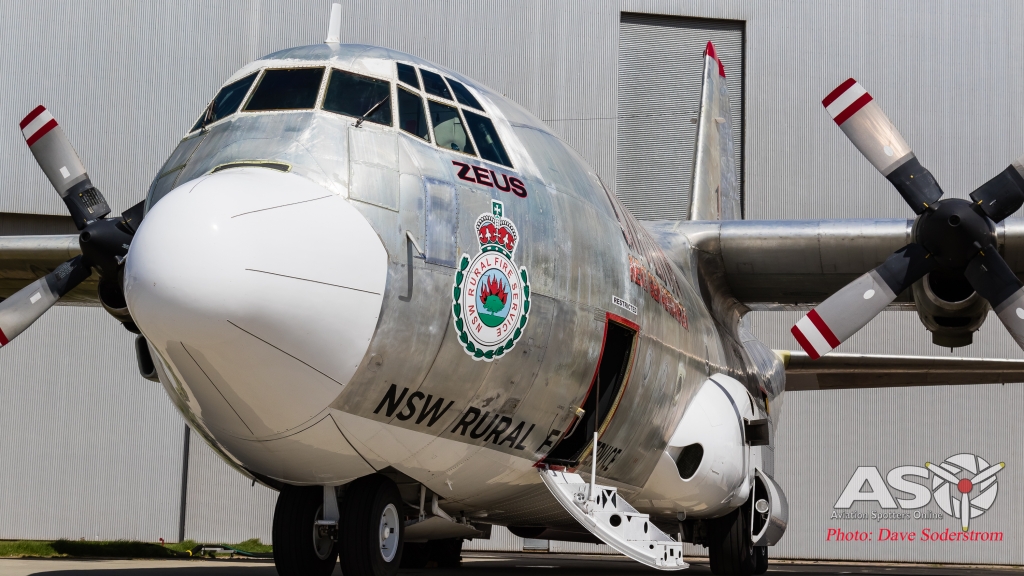 Fire Season 2018-19 Overview
Fire Season 2018-19 Overview
Aerial Fire Fighting in Australia
The 2018 fire season started a lot earlier than usual this season. With the first major fire occurring in the Southern New South Wales area of Nowra. It wasn’t long before one near Ulladulla and another in the Bega Valley burnt more than 4,600 hectares in August 2018. It was no surprise really, with 100 per cent of N.S.W in drought, forest fuels were extremely dry as that state transitioned into Spring.
As the season shifted into the summer proper it was Queensland and again N.S.W that saw fires of large sizes ignite just as the international aircraft and helicopters had started to arrive.
Two states that had an urgent call for aerial assets came from Tasmania and Victoria. As the fires continued to burn and spread, the call for additional support came from across the country.
Tasmanian fires were some of the largest in the state’s history. As the state only has a smaller aerial attack fleet, assets were called upon from N.S.W and Victoria to support the ground units.
The Victorian blazes in the high country and Grantville which saw all the local air attack assets put to work. Late in the season saw lots of fires which saw extension of contracts. The combination of all the LATS, SEATS, and rotary elements were all combined to minimise damage and destruction.
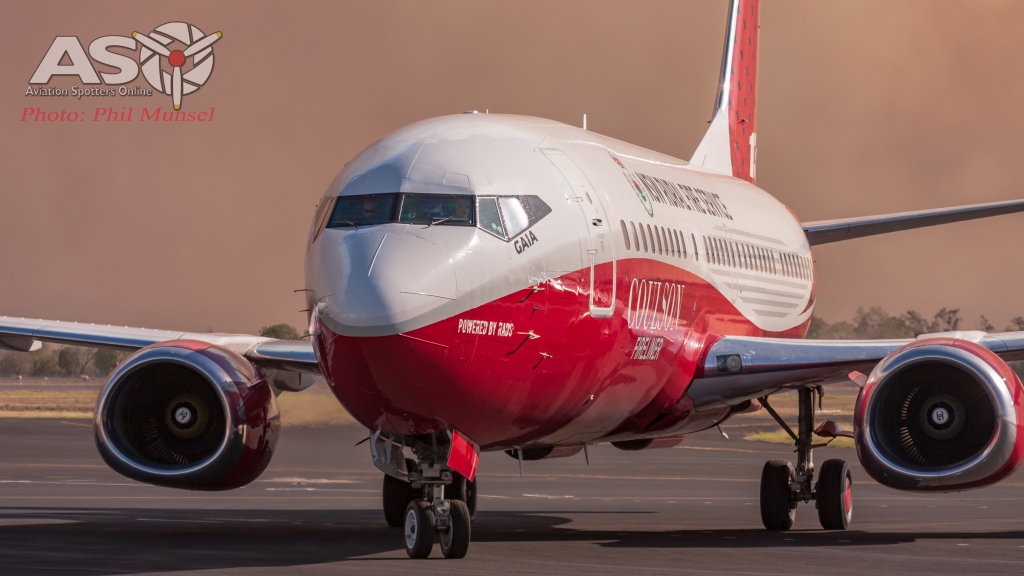
GAIA as it was christened by the NSW Rural Fire Service is the first of Coulson’s new 737 Fireliners fitted with the RADS delivery system.
The highs for season 18/19
2018/19 is notable for several reasons this season. It was the first deployment of Coulson’s Boeing 737 Fireliner, and Lockheed C-130Q ‘Rat Rod’ after its conversion to a fire bomber. Both were on contract to the N.S.W Rural Fire Service. The New South Wales state government announced funding of some $26.3 million to purchase one large fixed-wing air tanker and two fixed-wing lead/supervision aircraft to maintain a resident near-year-round large airtanker capability. This resident capability will continue to be supplemented by contracted seasonal large airtankers.
Western Australia has seen the deployment of a single Dauphin helicopter FIREBIRD 661. This has been brought on to boost WA’s aerial surveillance and reconnaissance capability. It will fly for up to 306 days of the year compared to the previous 110-day fixed service.
Victoria completed their work up trials and subsequent operational deployment of a night time fire fighting capability. The work up phase was a conjunction between the aviation regulator CASA, Victoria’s Fire Agencies, Emergency Management Victoria and Coulson Aviation and Kestrel Aviation. As mentioned the work up phase was completed just prior to fires taking off in the state.
Night time water bombing of the Rosedale fires saw the capability put to use. It also included a world-first hover-filling, in which choppers could quickly fill their tanks from remote water locations instead of heading back to base to refill.
To further emphasise the significance of this Kestrel Aviation of Australia, Coulson Aviation of Canada and Emergency Management Victoria’s Wayne Rigg, has been awarded a prestigious international honour for its pioneering work.
The Walt Darran Award was jointly presented collaborative work in developing safe and effective practices for aerial firefighting at night at a ceremony this month in France. This sort of recognition shows the growing level of professionalism and scope of operations now in effect across the country.
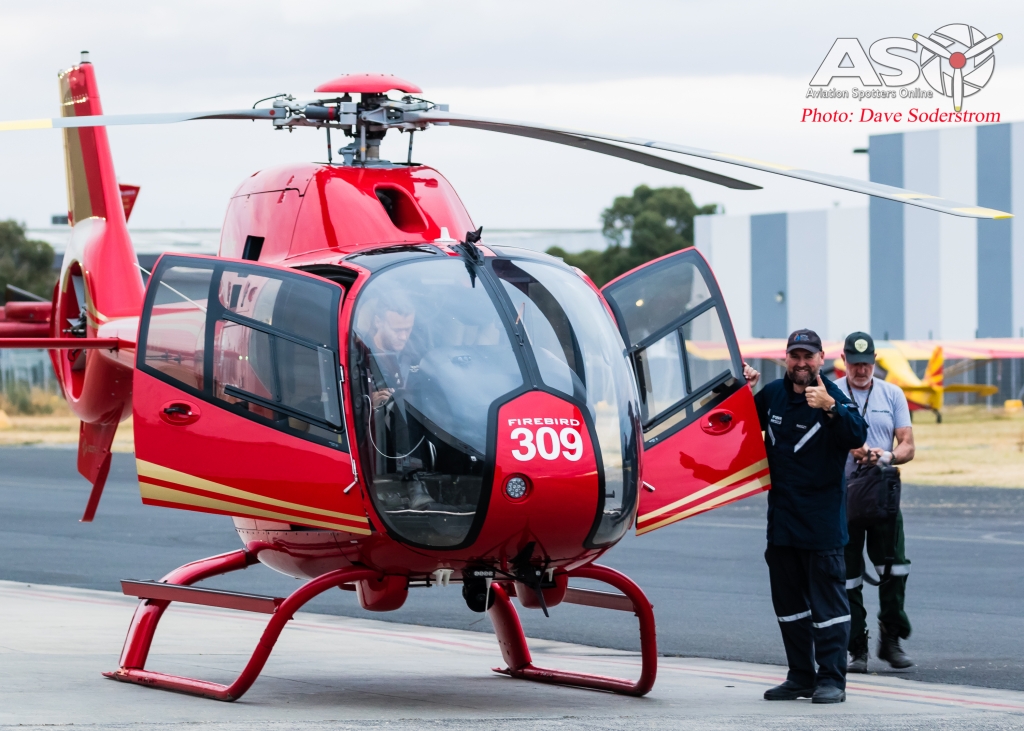
Emergency Management Victoria’s Wayne Rigg, gives the thumbs up after another day working the fires in South East Victoria.
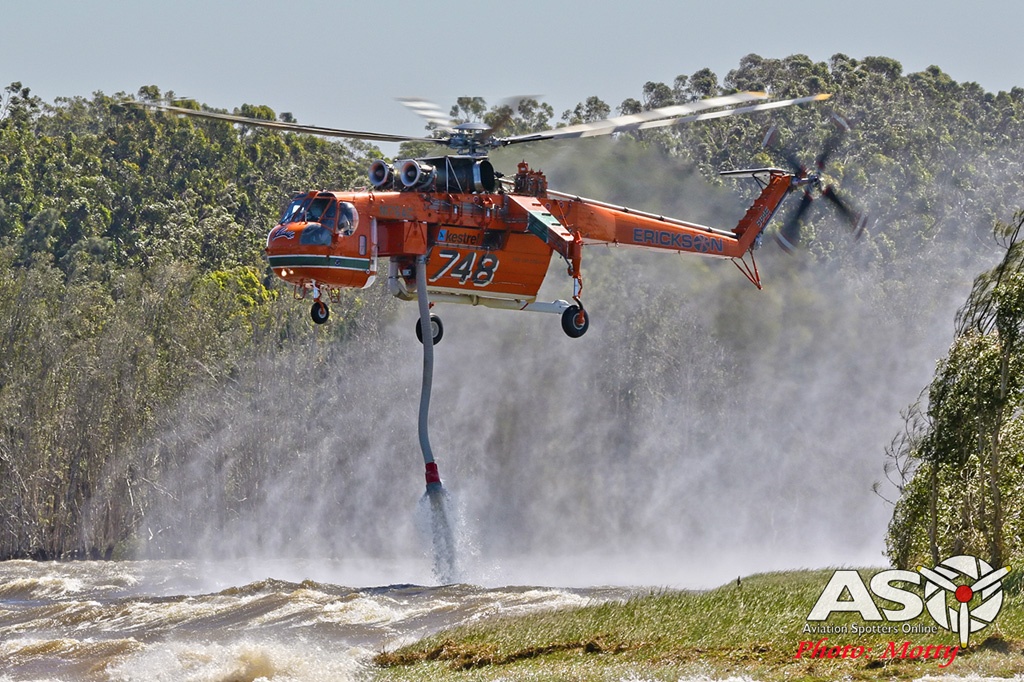
Helitak 748 draws water while fighting a fire near Newcastle.
Lows for season 18/19
As with all things in life with the highs there must be some lows. In August, while fighting the fires near Ulladulla, A BK-117 owned by Sydney Helicopters got its bucket cable caught in trees. Alan Tull the pilot, sadly didn’t survive the accident. Alan’s loss was a big blow to the industry, his professionalism and skills will be missed on the fire ground.
Another incident in January saw one of the Erickson/Kestrel operated AirCranes crash into the dam which it was drawing from. The three crew managed to escape as the AirCrane flipped over into the dam. All Aircranes were temporarily grounded until a clearance to resume flights was granted a day later. The cause of the incident is still under investigation. The crane was later sad when it was up righted and dissembled in situ and lifted out by land crane. The pieces were then trucked to the docks for return to the Erickson offices for rebuilding.

Both Coulson and Kestrel helicopters launch as part of the work up phase for the Night Fire Bombing campaign.
Changes for season 2019/20
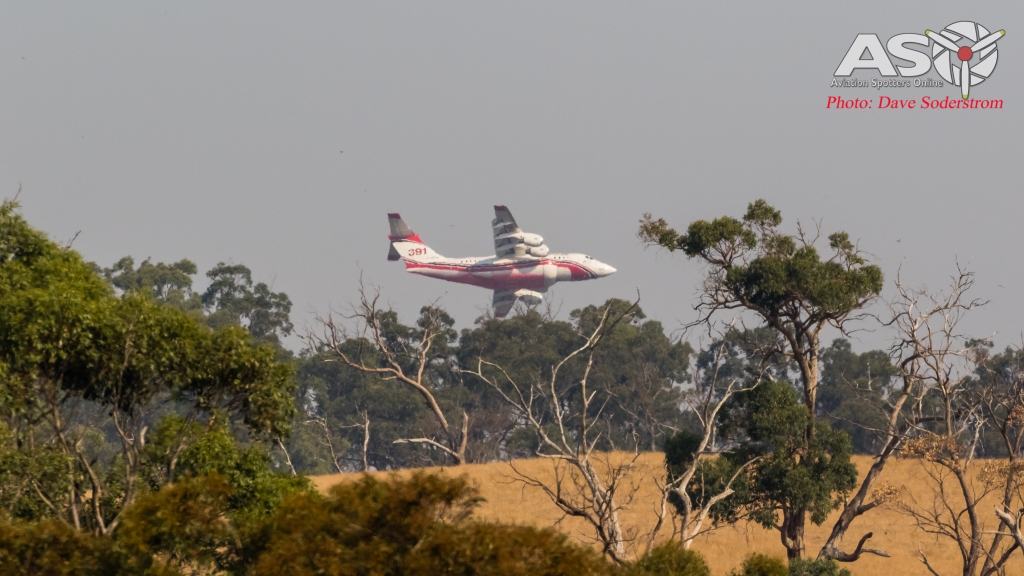
Bomber 391 lines up for a drop on the Granville fire in Victoria
Both Victoria and Tasmania were pushed to their limits this season. The combination of low rain fall and longer seasons making the states tinder dry. The call for back up from interstate was answered with aircraft and helicopters flying in to help contain the huge fires in both states.
On March 5th the entire Victorian air fleet was dispatched to fires within the state. Something never seen before, and hopefully not again in the near future. Although with the seasons now being longer and longer each year it will likely more common.
With fires still igniting in the exceptionally dry period in April, the 2019-20 season saw some contracts extended by an extra couple of weeks.

Bomber 391 follows the lead in Aero Commander on a drop at the Bunyip Fires in Victoria.
The NAFC issued tenders to suit the various types of fixed wing aircraft it can mobilise. Fixed wing aircraft used for fire bombing will be assigned a type number based on their water carrying capacity and design features, as specified below:
| Type | Engines | Water carrying capacity |
| 1 | Multi engine | Greater than 11,356 litres |
| 2 | Multi engine | Between 11,356 and 6,813 litres inclusive |
| 3 | Multi engine | Less than 6,813 litres |
| 4 | Single engine | Greater than 2,270 litres |
| 5 | Single engine | Less than or equal to 2,270 litres |
Rotary wing aircraft are also broken down into four distinct types, based on their varying capacities.
| Type | Internal payload | Water Carrying capacity |
| 1 | 2,268 kg or greater | 2,650 litres or greater |
| 2 | Between 1,134 kg and 2,267 kg inclusive | Between 1,135 litres and 2,649 litres inclusive |
| 3 | Between 544 kg and 1,133 kg inclusive | Between 380 litres and 1,134 litres inclusive |
| 4 | Less than 544 kg | Less than 380 litres |
For a comprehensive overview of the various types and their respective specifications please click on the following link from last seasons review here: http://aviationspottersonline.com/australian-fire-season-2017-18-overview/
Fixed Wing Fleet
This season six large air tankers from North America worked across the country during the summer. Three of those tankers were based at RAAF Richmond in New South Wales. These included 737 (T-137), a C-130Q (T-134), and RJ85 (T-165). Two LATs were based again at Avalon Airport which were C-130Q (B-390) and RJ85 (B-391). T-166 also an RJ85 was based at Dubbo. These were joined by forty four Air Tractor AT-802s (including Fireboss versions) two PZL Dromaders, three Learjets, one King Air, three Turbo Commanders, two Cessna Caravans, three Cessna 337s and two Cessna 182s.
All the aircraft were on contract to the various fire agencies across the country. A total of 68 fixed wing aircraft are on contract this season. These are also backed up by significant number on call as required and contracted through government agencies.
As with previous years, there are a number of aircraft not on direct contract through the NAFC which were on call as required basis.
Boeing 737 Fireliner
A first for Australia and a first for an operational deployment in the world was, Coulson Aviation’s Boeing 737 Fireliner. The company has purchased six 737-300’s with GAIA being the first converted into a 15,000 litre “Fireliner” air tanker. After conversion and work up trials including drop pattern testing the aircraft N137CG was soon on its way to Australia. It wasn’t long after the aircrafts arrival it was soon deployed.
It was used operationally for the first time providing support to ground crews at the Richardson Road, Campvale and Hospital Road, Weston fire in New South Wales in Late November. This season has been a very busy one with the aircraft deployed to assist in Queensland, New South Wales, Victoria and Tasmania in support of the local fire services.
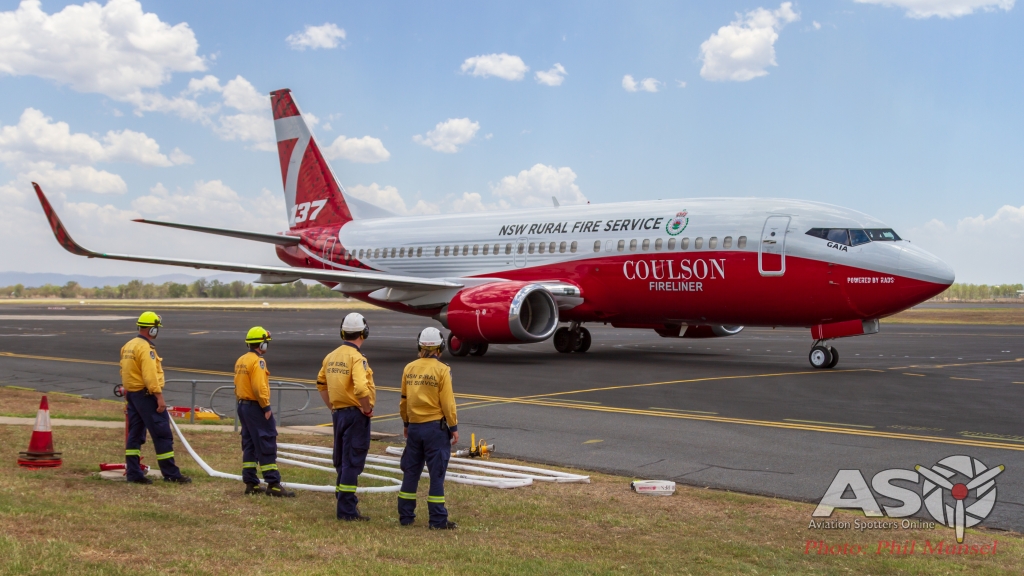
NSW Fire Service Crews prepare to reload GAIA for its next mission.
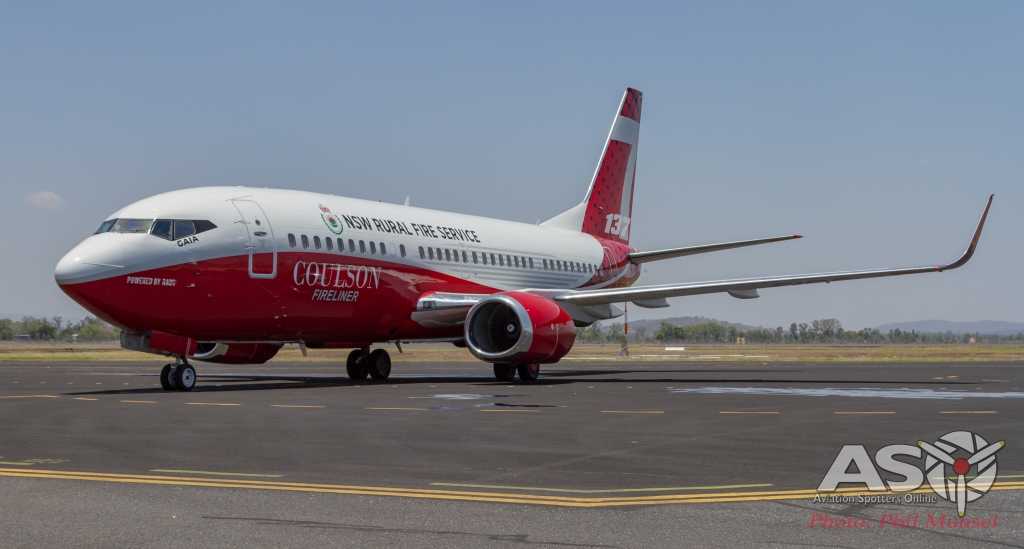
Even with a full retardant load and fuel tanks with 4.5 hours of endurance the aircraft is under its max gross weight the conversion of the aircraft has left it with the full interior and galleys in place.
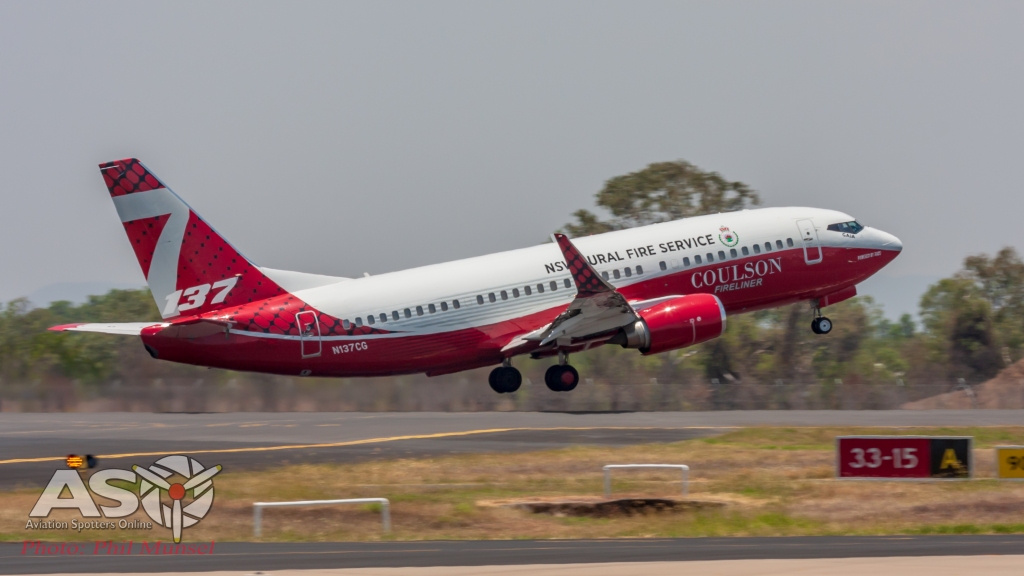
While deployed in Queensland the Fireliner dropped over 300,000 litres of water.
From the periods of the 26/11/2018 until the 05/12/2018 in forty three drops by the 737 it dropped 533,961 litres over twenty seven flight hours
On the 14th of May the NSW Government signed a contract for the purchase of a new aircraft along with and two Citation V, Lead/Intelligence Aircraft. The government’s $26.3 million investment will see the ‘737’ operated by the aircrafts fire bomber conversion company Coulson Aviation. The purchases are accompanied by a ten-year operational contract where Coulson will provide all flight and maintenance personal.
Coulson Aviation CEO Wayne Coulson said he looked forward to being able to work with the RFS on this new venture and would be expanding its NSW base in the coming months and will be looking to hire Australian pilots and ground crew.
The new 737 is due to at RAAF Richmond in July this year.
Air Tractor
Air Tractors are certainly the backbone of the fixed wing aerial attack in Australia with eleven operators here flying the type on contract through the NAFC to the respective fire agencies across the country.
Operators of the type include Field Air from Ballarat, AGAIR in Stawell, Pay’s Air Service from Scone, Kennedy Air Ag from Gunnedah, Precision Aerial from Meandarra, Aerotech from Kent Town, Aircair from Moree, Sky Croppers in Griffith, Fred Fahey Aerial Services from Cowra, Dunn Aviation from Jandakot, and Aerotech NT from Bachelor all have Air Tractors on contract or working this season.
The benefits of a versatile machine such as the Air Tractor where it can be adapted to various roles is the main reason for their popularity. In the Fire Season the machines are converted from their crop spraying/dusting roles used in the winter and spring months see the spray bars and spreaders taken off and the belly tanks refitted for their fire fighting bombing roles.
It is worth noting that nearly all the Air Tractors have different styled tanks and door designs amongst other operational features. Some operators have infra-red cameras installed, electronically controlled drop doors and a host of features all designed to get the water and or phos-check on target.
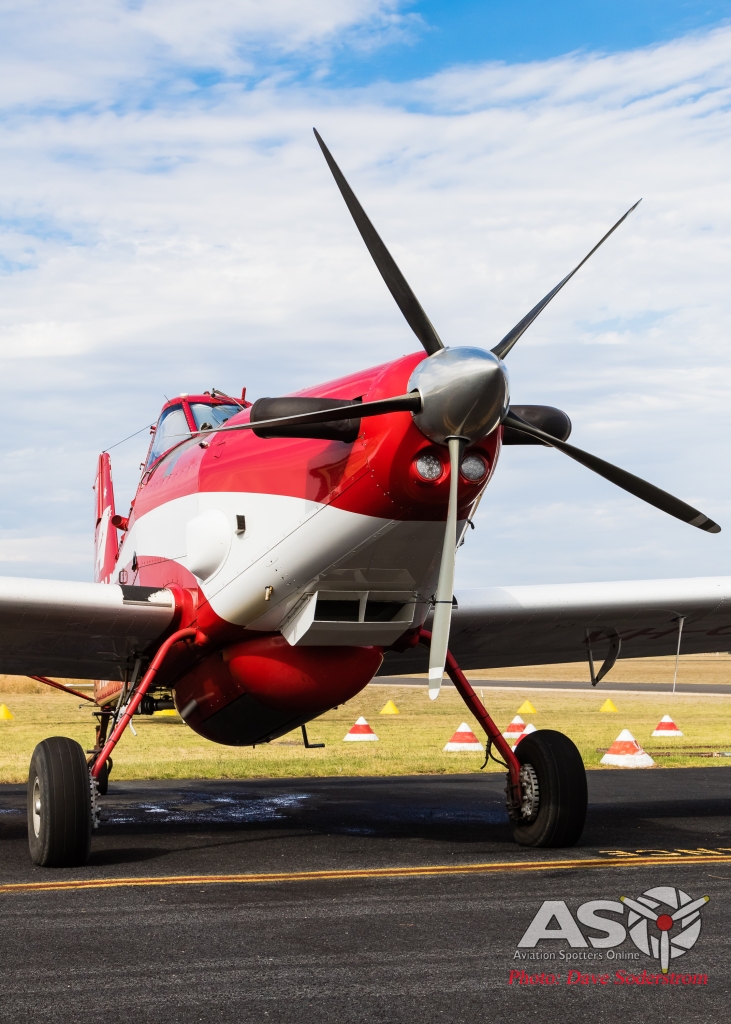
One of two of Aerotech’s AT-802s on stand by at Mt Gambier South Australia.

Pay’s Air Service AT-802 VH-LIM at rest at Firebase Mansfield in Victoria.
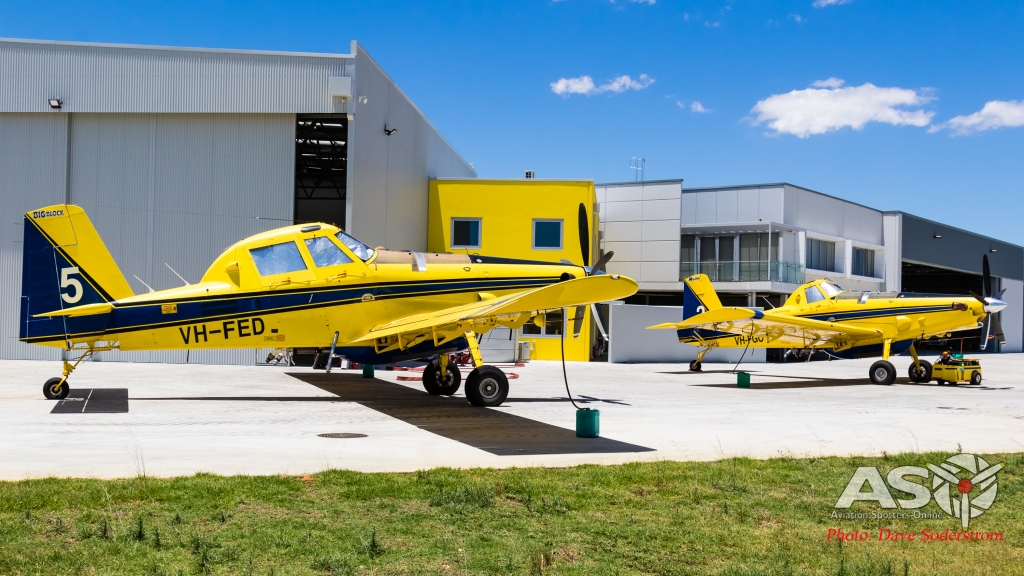
Dunn Aviation have moved into their purpose built base at Jandakot this year. This enables faster launch times and staging facilities for the pilots and filling crews.

Field Air have five Air Tractors on contract this season. One in Cambridge Tasmania, two in Bairnsdale Victoria and two more in Hamilton Victoria as seen here.

Field Air Bomber 362 VH-FZX departs for another drop out of Firebase Latrobe.
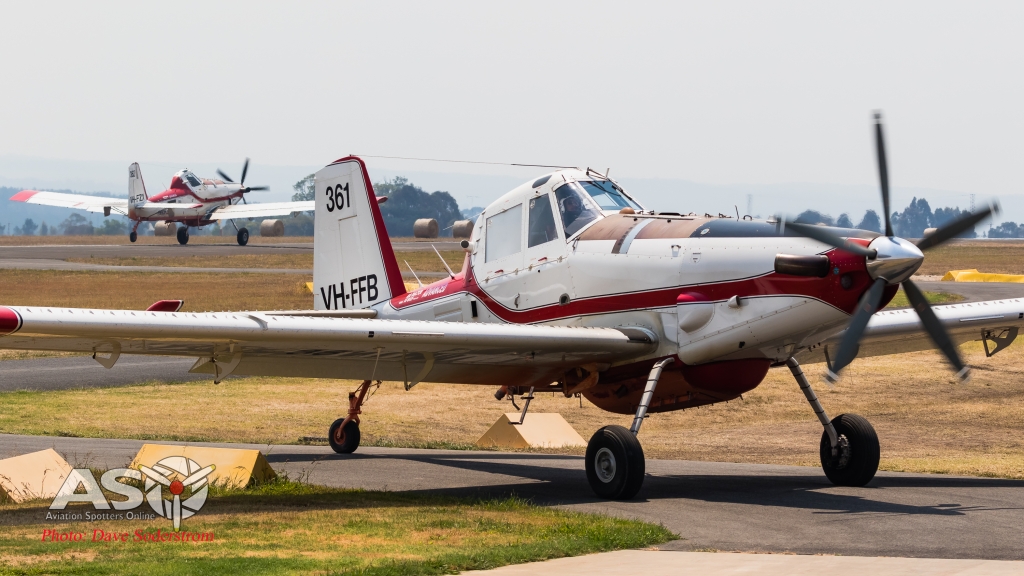
Field Air Bomber 361, VH-FFB comes into reload at Firebase Latrobe in Gippsland Victoria as VH-FZX depart.

AGAIR have four AT-802s on contract this season. Two based at Casterton in Victoria and two at their home base of Stawell in Victoria.

Powered by the hugely successful Pratt and Whitney Canada, PT6 turboprop.

Bombers 351, 354 and 355 VH-ARA VH-VBV and VH-ZJZ respectively all part of the AgAir fleet, are seen back at the companies base at Stawell in Victoria, after the completion of their contract season.
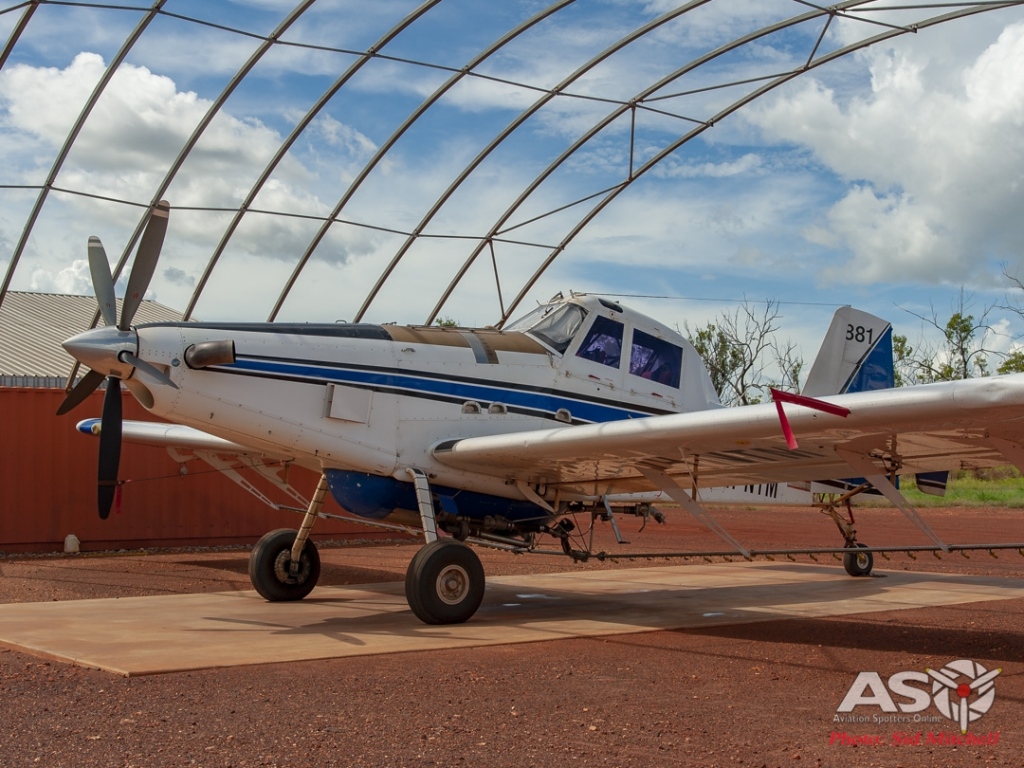
VH-NTM or Bomber 381 operated by Aerotech in the Northern Territory.
Airtractor AT-802 Fireboss

A unique version of the Air Tractor is the Fire Boss. Equipped with floats for water operations. These machines are highly praised for their versatility. Kennedy Air brought one of their Fireboss aircraft fresh from fighting fires in Tasmania to display at the Australian International Airshow at Avalon Airport.

Pay’s Aviation Fireboss VH-FBZ flying as Bomber 218 working the fires near Newcastle NSW.

Pay’s second Fireboss VH-FRX operates as Bomber 360. It is seen here at the Albury Hume Firebase in NSW.
Airtractor AT-504
An interesting type which is not all that prolific in numbers is the AT-504. Dunn Aviation has a single example VH-FEC or Bomber 614 based at Jandacot. This machine is capable of carrying some 1836 Litres of water or mixed tank for dropping on a fire. It does have one other very unique feature, its a two seater. Not like its bigger AT-802 which seats two people in tandem. The AT-504 seats two people side by side, a perfect training platform for an upcoming fire bomber pilot. This is exactly what Dunn Aviation uses the type for, training pilots on drops and fire bombing techniques.

Cessna C-337
For this season three Cessna 337’s are contracted through the Victorian Government. Ballarat operator Aerovision provided them for use across the state. The type is extremely well suited to the roles of fire detection, reconnaissance and fire supervision, hence the Birddog call sign. The aircraft can loiter on scene for up to 7 hours on a single tank of fuel. The speed of the Cessna 337 is well matched to the Air Tractor AT-802 firebombing aircraft.

VH-IEV holds for Bomber 361 at Latrobe.

VH-IEV flying as Birddog 374 is seen at Firebase Latrobe.

VH-ZEV flying as Firebird 373, is seen at Firebase Hamilton.
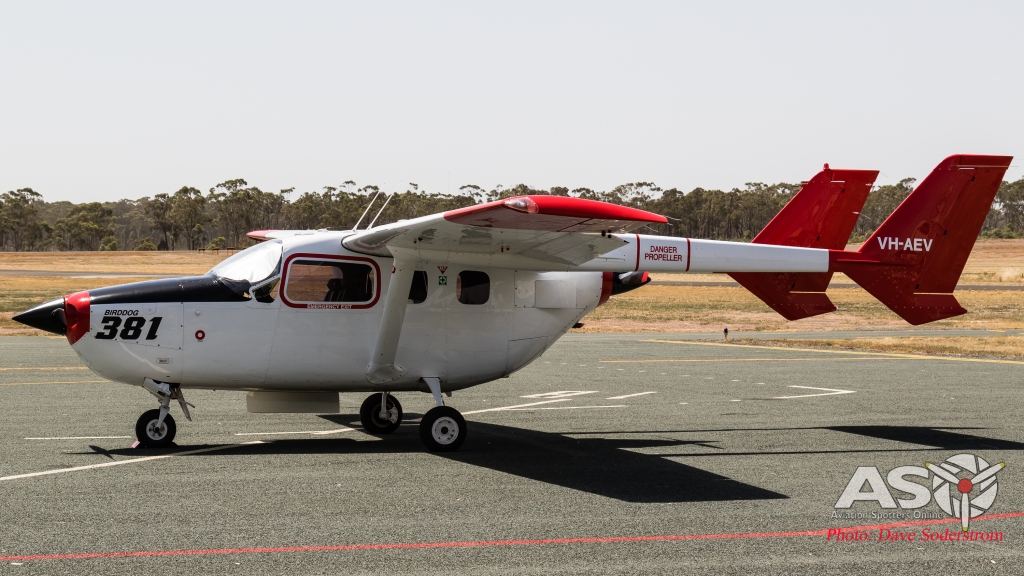
VH-AEV flying as Birddog 381 is seen on standby at Bendigo Airport.
Gates Learjet
For season 2018/19 the Victorian and NSW Governments have contracted three Learjet 35/36 fire scanning aircraft. Operating at high flight levels, the aircraft are equipped with a pod which features infrared and mulitspectrial line scanning instrument and data processing equipment. The imaging is processed on board with GPS coordinates and terrain elevation data.
This processing geo-rectifies the image to make it usable in mapping software and geospatial information systems. The combination of thermal and visual sensors used and the geo-rectification process creates images that are easy for fire fighters to interpret and for them to understand where the fire is and what it is doing.
A broadband satellite data communication system enables rapid transfer of processed and raw data from the aircraft to users on the ground regardless of the aircraft’s location.

Air Affairs Learjet 35 VH-LPJ is seen at Rockhampton in Queensland during the fires which were near by.
Rockwell Turbo Commander
The NSW, Victorian and Queensland Governments have all contracted an example of the Commander for use within their respective states this season. A fourth piston engine Commander is also on contract. The type is used to supervise Airtanker operations.
Seating five people, one of the passengers is an Air Attack Supervisor will direct air tankers on where and how to drop their loads on a fire. Another role for the ‘Birddog’ is as a lead in aircraft where the Commander flies the drop profile for the larger tankers where to drop and what to be aware of on a drop. This role is done using a smoke trail for the tankers to follow in.

Pesca Aviation’s Turbo Commander VH-ATF flew as Birddog 370 this season. The aircraft is seen at Firebase Avalon.

AgAir’s Turbo Commander VH-HPY fling as Birddog 275 was contracted to the NSW Rural Fir Service. It is seen here at Rockhampton when the fires in the state were supported by assets from NSW.
Beechcraft KingAir
The Victorian and NSW Governments both contracted through NAFC, one Beechcraft King scanning aircraft. The aircraft is operated by Nowra based company Air Affairs and was kept busy this season. The aircraft is used to photograph and produce real time imagery for the fire agencies which are used to draft the plans to fight the fire both on the ground and in the air.
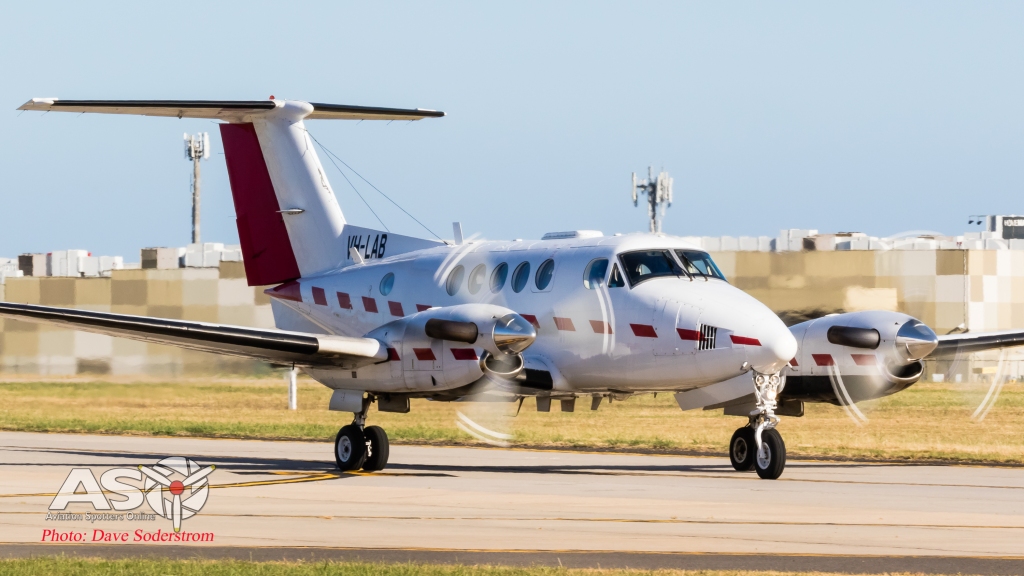
VH-LAB lands at Essendon Airport where it worked the fires grounds in the South East of the state.
Cessna C-208 Caravan
Cessna’s C-208 Grand Caravan is contracted through the South Australian and Victoria State Governments. Four are on contract this season. The type flies mainly in the air supervision role and also acts as transport for fire officials and other crews to quickly get on scene as required.
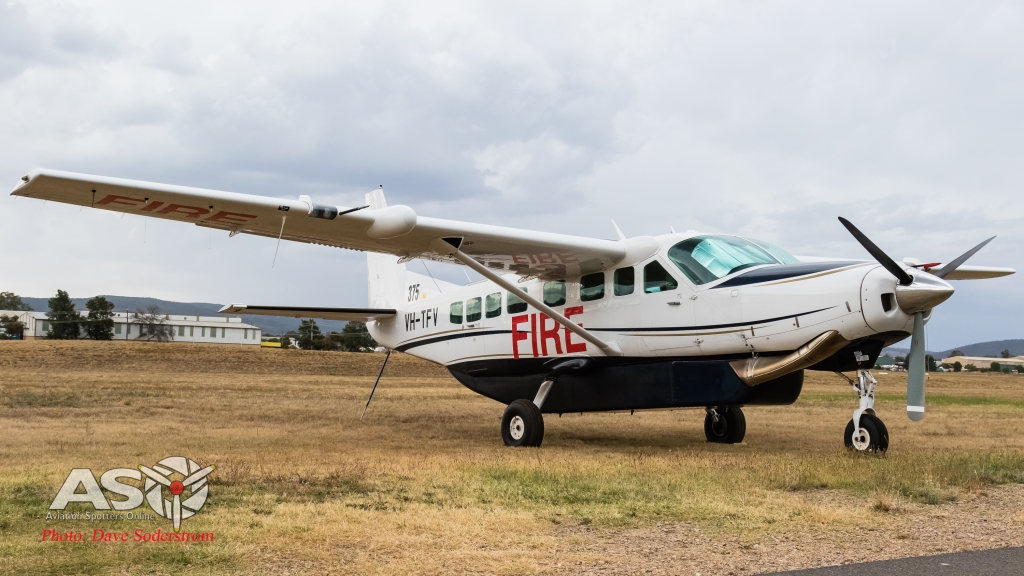
VH-TLV operated by Pay’s Air Service is seen at its Albury base.

Wrightair’s Cessna 208 flew as Birddog 396. It is seen here at Moorabbin in Victoria.
BAe RJ85
This season was the first time that three of the Conair/Field Air operated RJ85s went into action across New South Wales and Victoria.
C-GVFK was the first to arrive and commenced standby at RAAF Richmond in late August 2018 with the callsign Bomber 165. It was joined just over two months later when C-GVFT Bomber 166 arrived into New South Wales and commenced standby at Dubbo Regional Airport.
At the beginning of December, Bomber 165 moved down to Victoria and took up its usual position operating from Firebase Avalon Airport (with a change of tail number and callsign to the familiar Bomber 391). During its contract it was also deployed to a temporary base at RAAF East Sale working on the large Rosedale fire in South Eastern Victoria.
Bomber 166 remained based at Dubbo Airport on a NSW Rural Fire Service contract for the balance of the seasons The aircraft at one point joined the fight helping out in Tasmania as well as a number of short deployments in Victoria.
The third RJ85 that operated this season was N366AC callsign Bomber 163. It completed one of the NSW contracts and unfortunately could stay no longer due to crew/aircraft commitments back in USA.
During the season, the RJ85’s conducted operations in New South Wales, Victoria, Queensland and Tasmania, delivering over three million litres of fire suppressants. Both C-GVFT and C-GVFK returned to their home base in Abbotsford BC in April 2019.
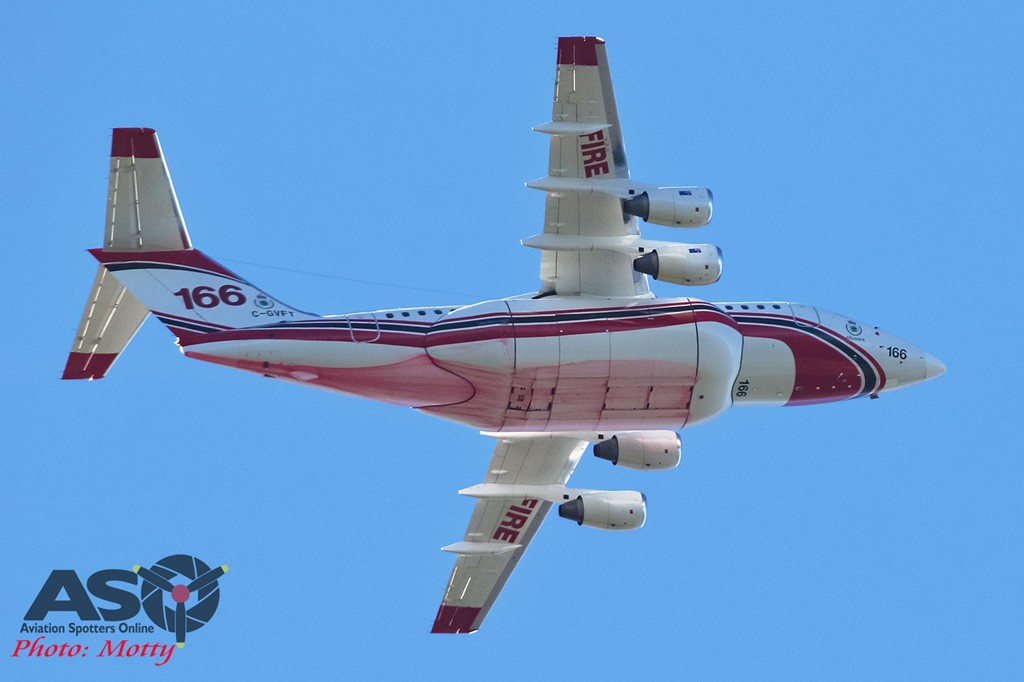
RJ85 C-GVFT working a fire near Newcastle.
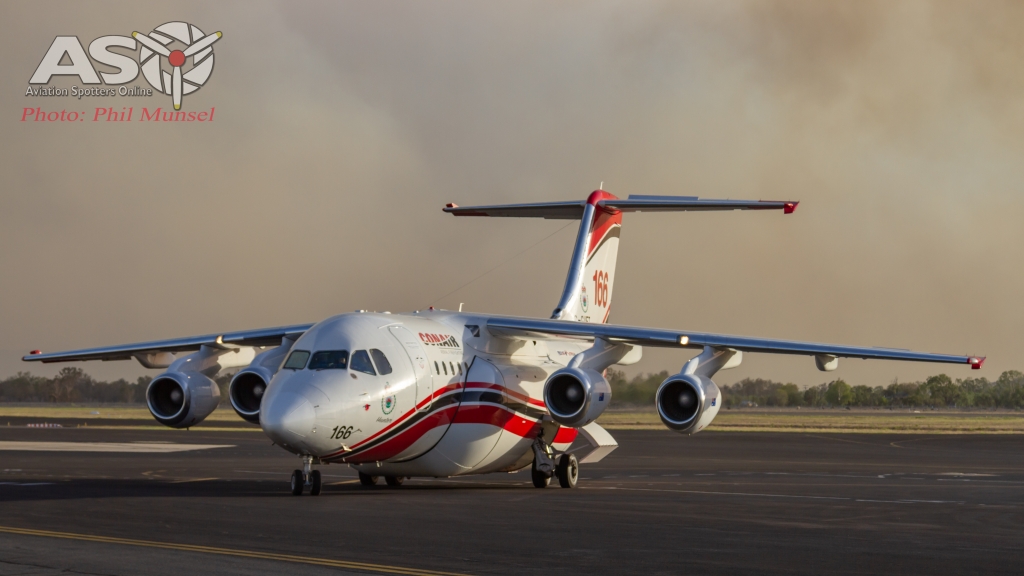
RJ85 C-GVFT again this time in Queensland in support of the fires in Rockhampton.

Fire crews begin to load RJ85 C-GVFT.

RJ85 C-GVFK arrives at Avalon after working a blaze in Gippsland Victoria.

Bomber 391 comes back to its Avalon base after dropping on a fire in Victoria.

Bomber 166 departs Avalon on its way to Hobart to assist in the huge fires the state endured this season.
Lockheed C-130 Hercules
Coulson again brought two of their Lockheed C-130 Hercules on contract this season. Once again Victoria contracted N130FF, Bomber 390. The NSW Rural Fire Service contracted a second aircraft N130CG or Bomber 134. This aircraft had only recently left the conversion facility at its home base Mesa, Arizona where it was transformed into Coulson’s fourth C-130 air tanker.
Bomber 134 wasn’t in the country long when it was called to assist on a fire near NASA’s Deep Space Network of satellite antennas near Canberra. This was the aircraft first usage on a going fire anywhere in the world. Bomber 134 has been seen and operated out of NSW, ACT, Victoria and Tasmania this season. It was called into to supplement Bomber 390 in Victoria this season when the aircraft was off line for some maintenance. Both were kept exceptionally busy working the fires burning in Victoria late in the season. The two returned back to the United States in mid March in preparation for taking up working contracts for the start of the Northern fire season.
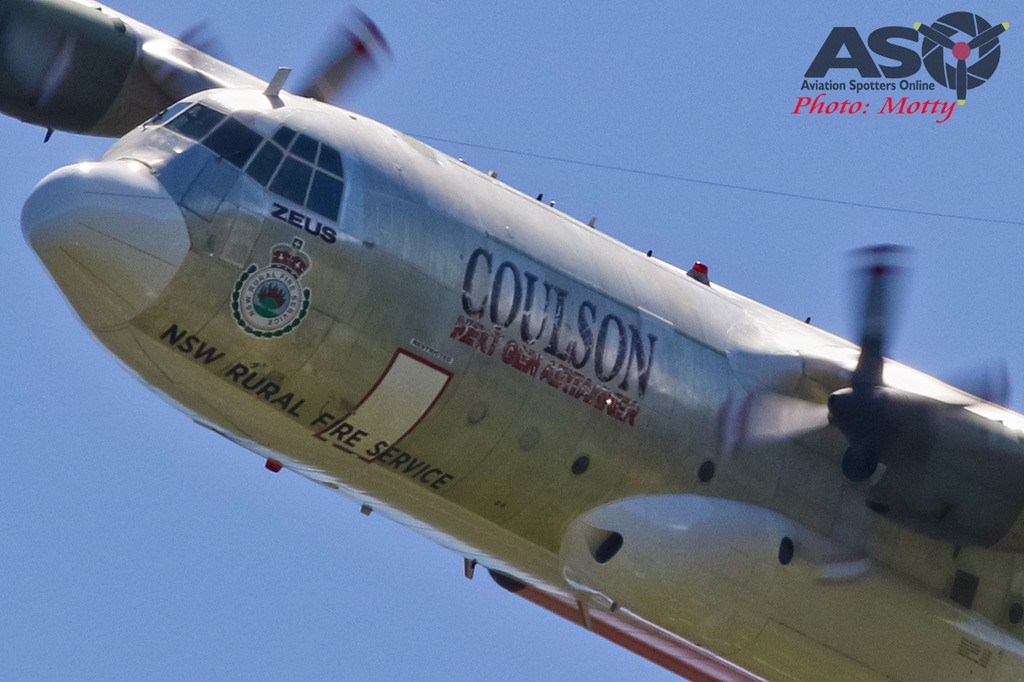
N130CG or Bomber 134 turns for another pass on the fire near Newcastle.

N130CG also assisted with the fire in Rockhampton. It was a very busy aircraft all season. Being deployed to NSW, Victoria, Queensland and Tasmanian fires.

Another drop on target for the experienced crews of N130CG.
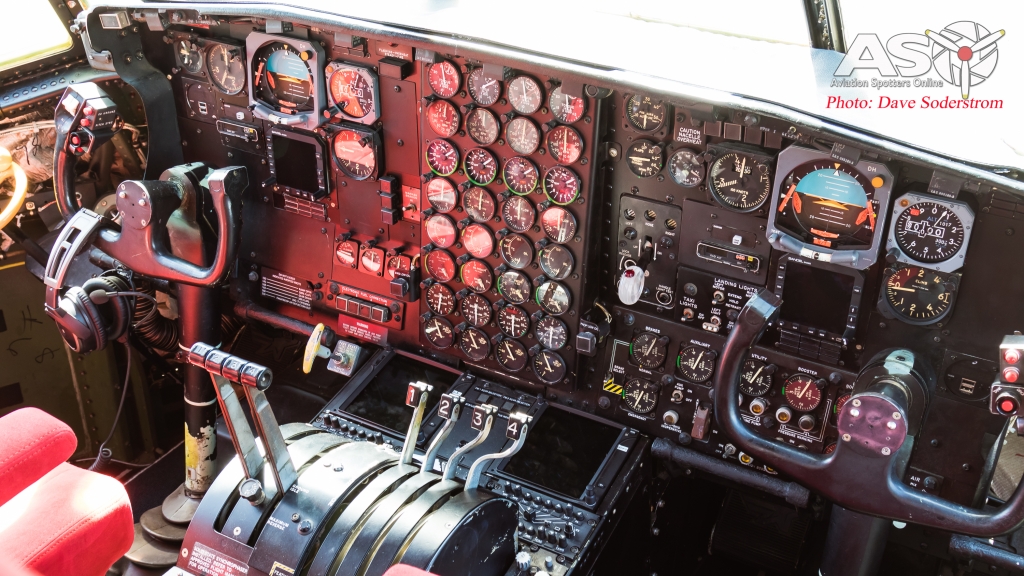
The well maintained flight deck of N130CG. And upgrade is being planed for the aircraft with new glass screens to replace the old steam gauges.
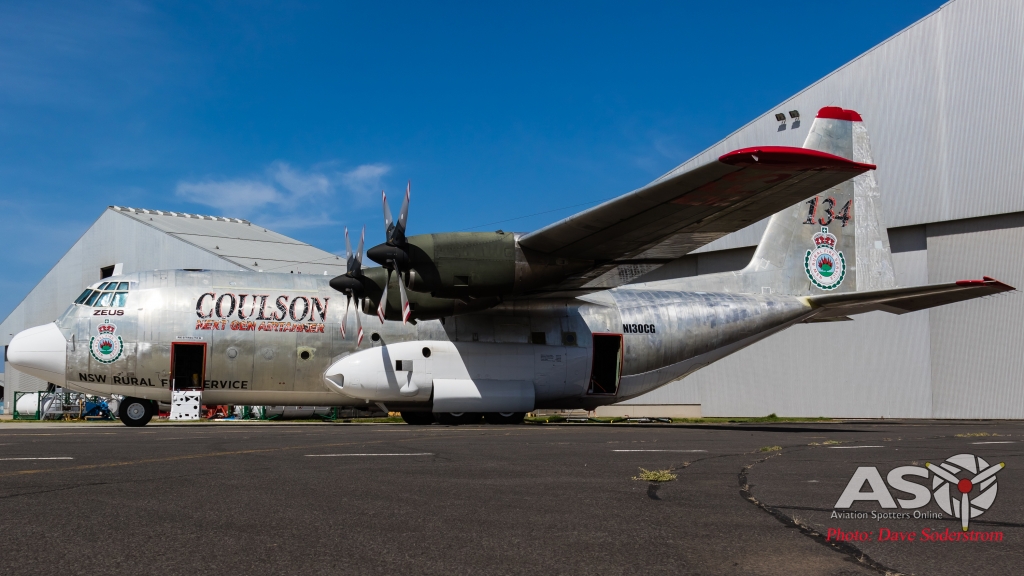
After N130CG had finished its tour of duty here in Australia. The aircraft was flown back for maintenance and repainting.
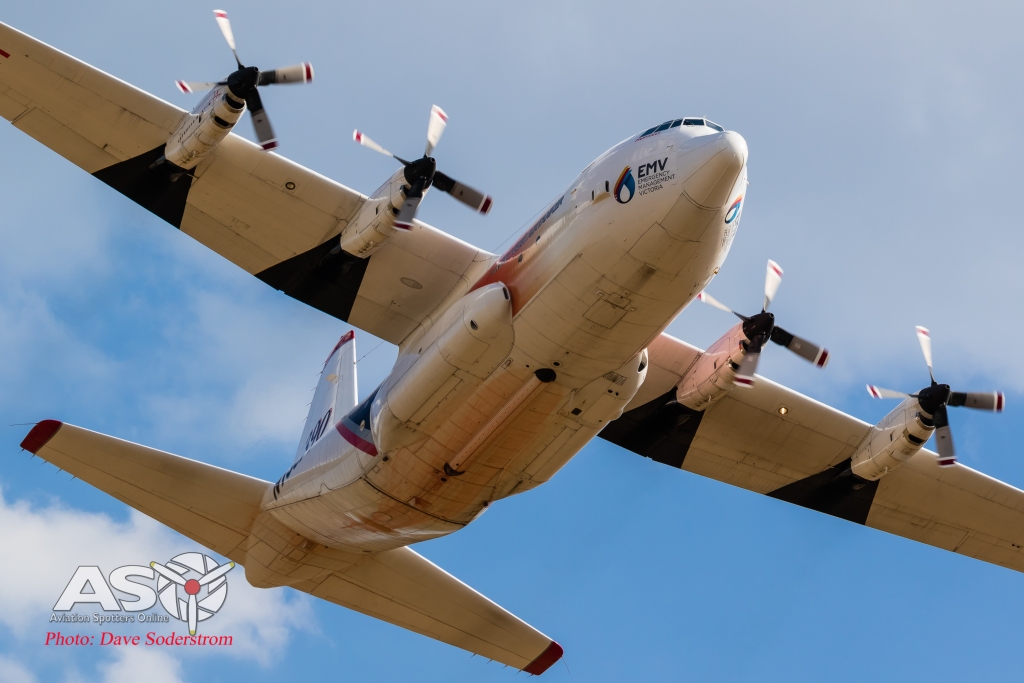
N130FF heads off to drop on a fire in a state forest north of Avalon.
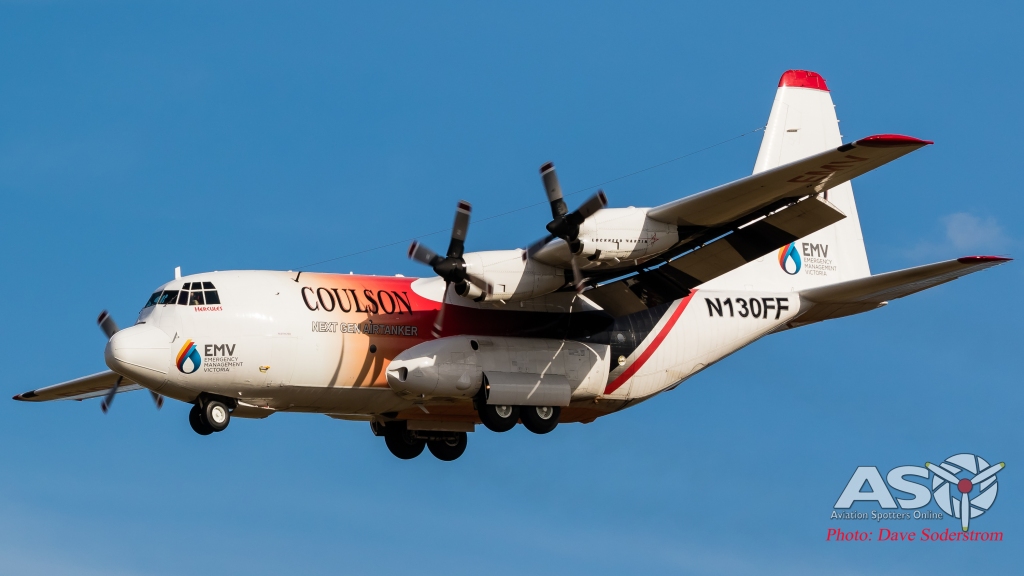
Returning from a drop in Northern Victoria, N130FF proudly wears the EMV logos.
American Champion 8GCBC Scout
Western Australia has again contracted six Scout aircraft for the season. Owned and operated by the Department of Biodiversity Conservation and Attractions. Operated in the Firespotter role which supervise waterbombing operations in the south-west, relaying information on fire behaviour to fire controllers. The aircraft are based at Albany, Manjimup, Jandacot and Bunbury. 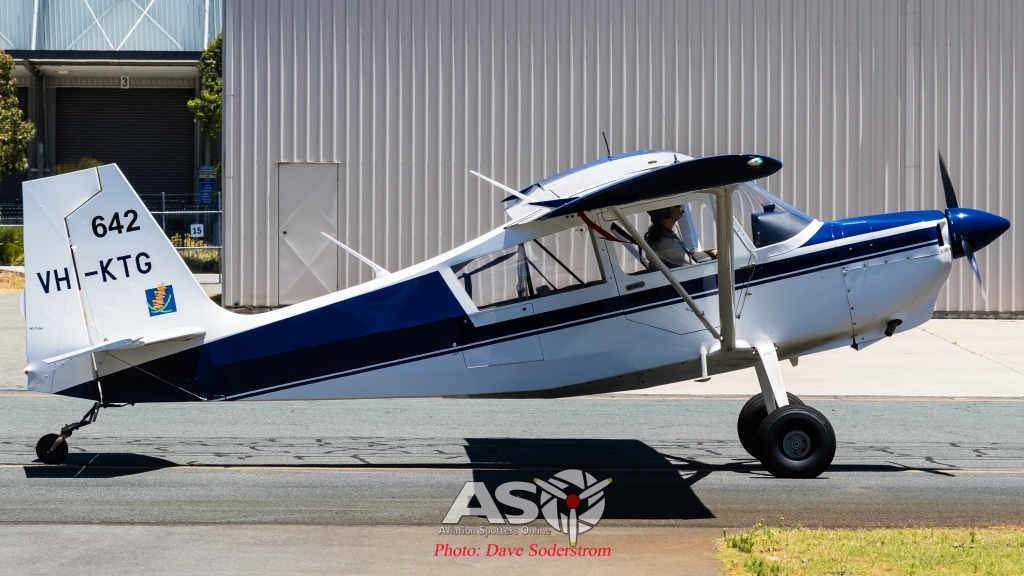
VH-KTG returns from another patrol to its Jandacot base.
Ayres Thrush
The Ayres Thrush is also in use in the fire fighting role within Australia. Central Highlands Aerial Services based in Emerald, Queensland. The company deployed two of their Thrush S2R aircraft on fires in the state.
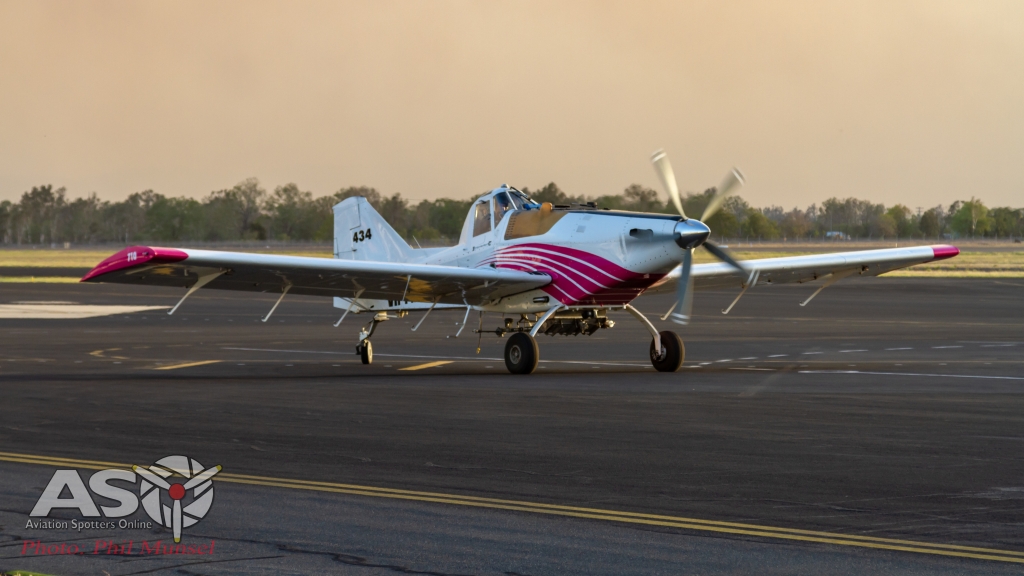
Emerald-based Central Highlands Aerial Services (CHAS) Thrush S2R-T660 aircraft VH-PMD “Bomber 434” and VH-KCS “Bomber 435” are seen operating out of Rockhampton Airport.
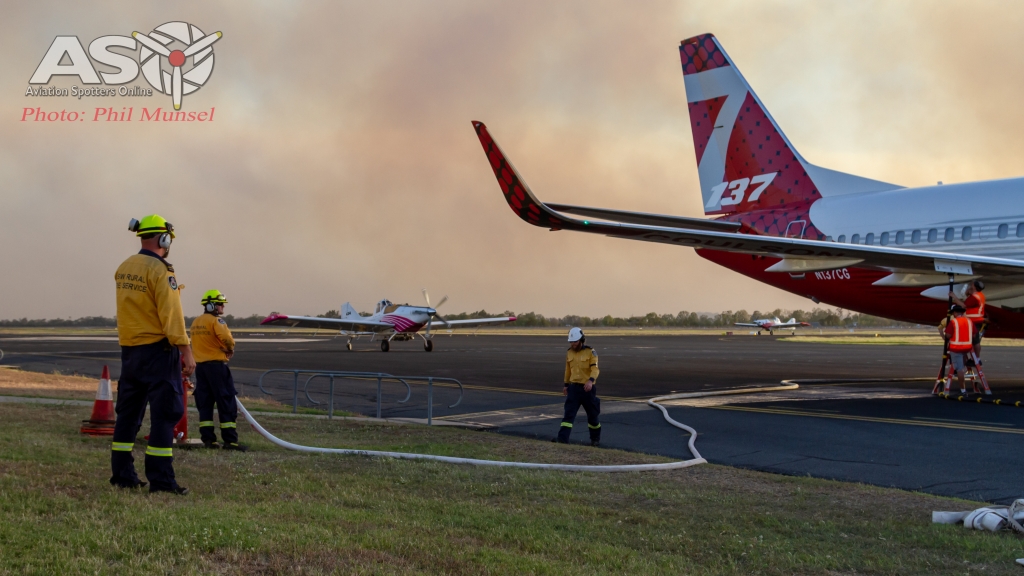
Rotary fleet for the season
This year was another growth year for the rotary fleet. Both in terms of numbers, types and capabilities. Starting with the larger Type 1 fleet which is a machine able to carry or hold more then 2,650 litres of water. Six Erickson S-64’s, three Sikorsky S-61’s, three UH-60 Blackhawks from Firehawk/TOuchdown and Timberline/Pay’s and fourteen Bell 214B Big lifters make up this large array of machines. The operators like, Erickson, Kestrel, Timberline, Pay’s and McDermott’s coupled with very experienced and well seasoned crews make for a formidable lineup. Additional smaller types like the AS-350, BK-117, Bell 204, Bell 206 are part of the varied mix required by the NAFC fleet.

The big and small of the Helitak fleet. Microflite’s fully refurbished Bell 212 VH-JJR winding up at the Grantville fire seen here with the Essendon Skycrane Helitak 748 passing over.
Airbus helicopters AS350
One of the more numerous types in service across the country is the Squirrel. With some twenty five of the single and twin engined versions. The number of operators is just as long.
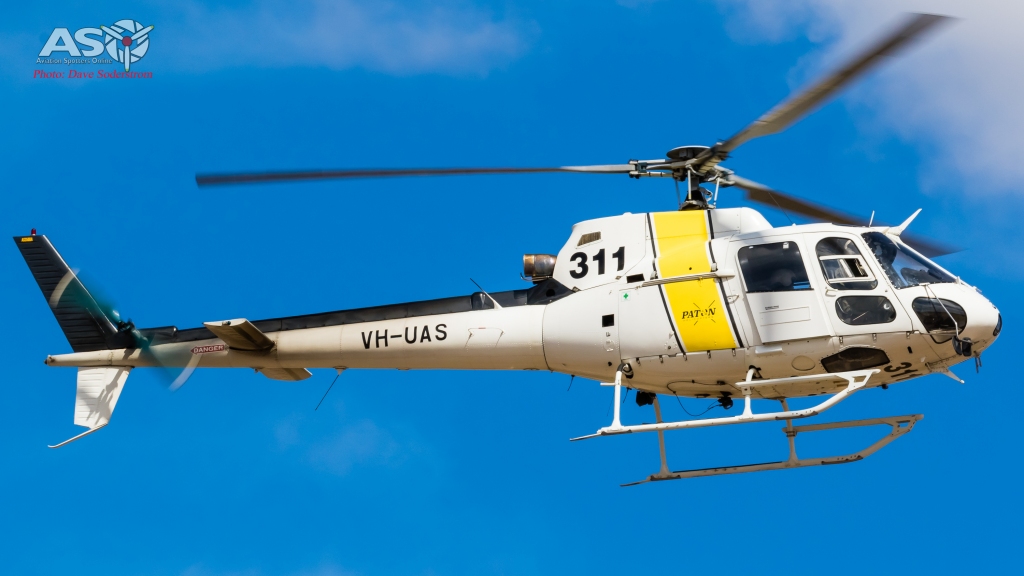
Paton Air’s VH-UAS flies as Firebird 311. Based not far away at Maindample, Paton Air had two of their machines at Firebase Mansfield.

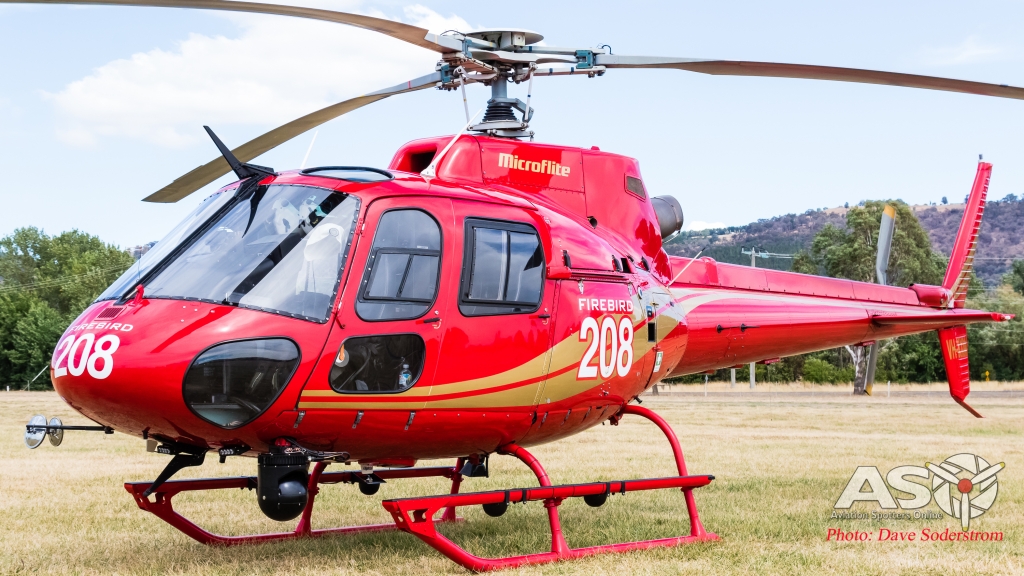
Based out of Bankstown during the NSW season as an AIG platform, VH-XXM came back down to VIC to assist with various fires such as the Dandongadale, Matlock, Bunyip and Cambarville just to name a few. Seen here at Mansfield airbase it played a big role in providing valuable aerial intelligence during the Dandongadale/Rose River fire.

Firebird 325 AS355 Twin Squirrel landing at Gembrook football oval for fuel during the devastating Bunyip fires. FB325 was used as a secondary AIG platform during the fire season to assist FB300.
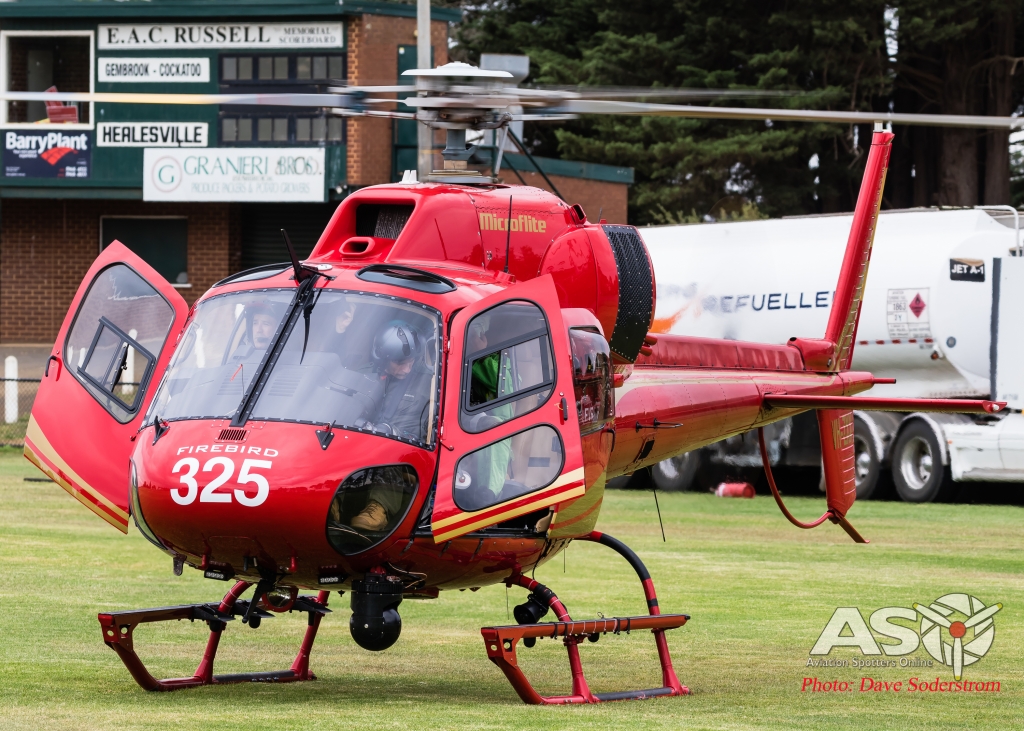

Originally built as A22-005 for the Royal Australian Air Force. Now owned by Aero Logistics, VH-BUK flies as Firebird 287.
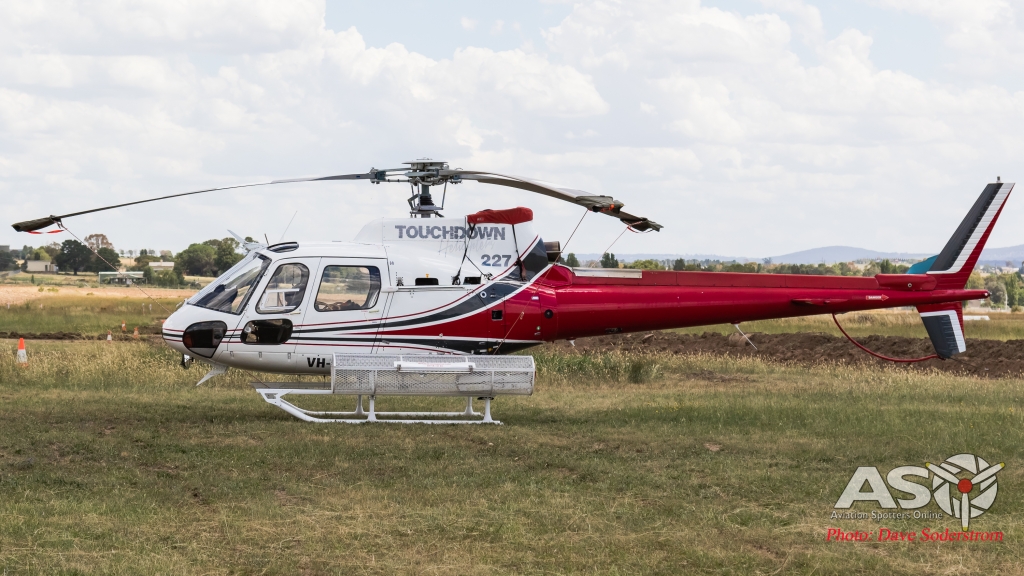
Touchdown Helicopters AS350 VH-TSV on standby at Bathurst NSW

Microflight’s H125 VH-XXW flies as Firebird 300. Seen here returning to its Moorabbin base after working the Bunyip fire.
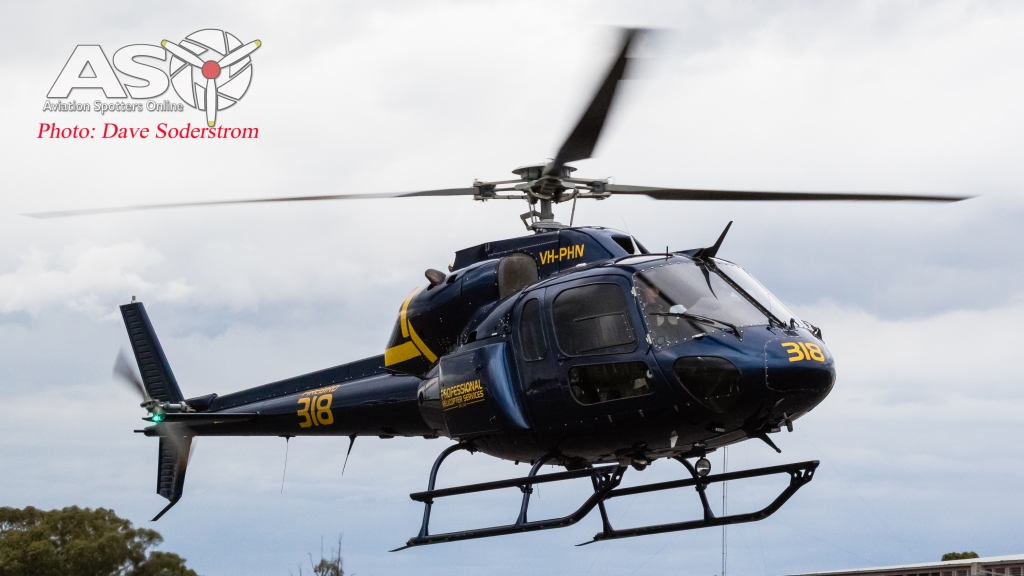
Professional Helicopters AS355 operating as Firebird 318, teen during the night fire fighting trial work up phase.

In South Australia VH-SGK flying as Firebird 510 is operated by Helifarm on contract to the CFS. It is seen at Firebase Mt Gambier.

AS350 B3 VH-ZBQ operates as Firebird 707 seen at rest. The machine was part of the fleet working out water bombing in the Huon Valley in southern Tasmania. The aircraft was on loan to Helicopter Resources.
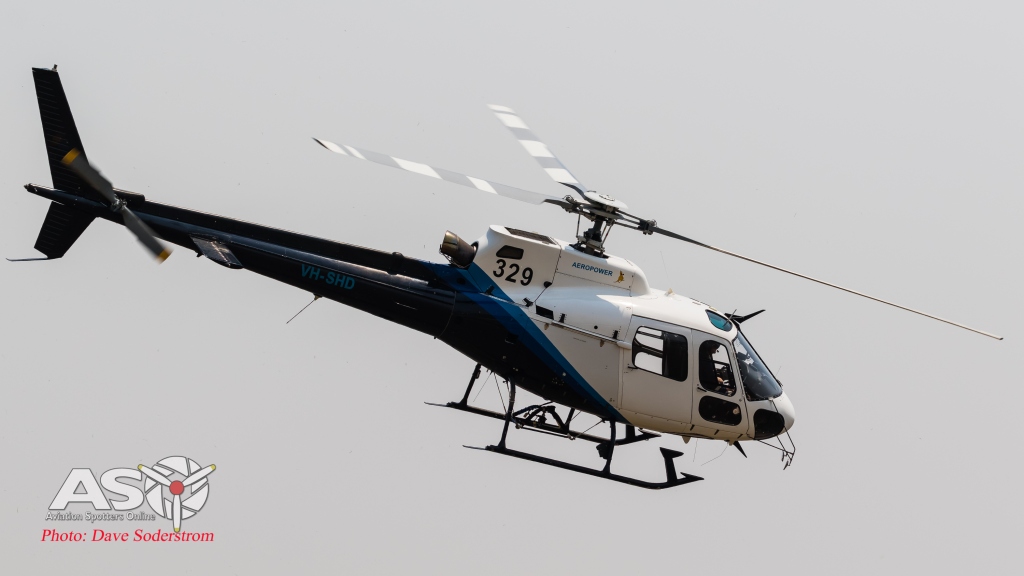
Aeropower who base them selves at Rothwell in Queensland had AS350 VH-SHD flying as Firebird 329. It is seen here departing Latrobe Firebase to work on fires nearby.

AS355 VH-HGU flying as Firebird 474 is part of the McDermott fleet. The helicopter is seen here landing at Firebase Launceston.

Professional Helicopters based at Moorabbin in Victoria deployed Firebird 321, VH-AWK to assist with the fires in Tasmania.
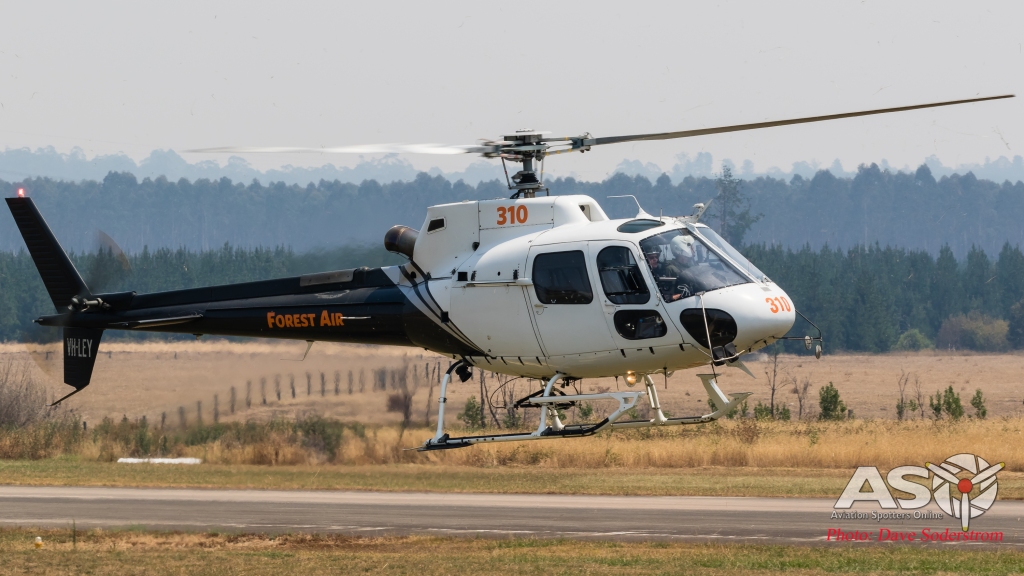
Forest Air’s, Firebird 310 VH-LEY was seen right across Victoria this season. From Colac to Latrobe and places between. Seen here departing Firebase Latrobe.
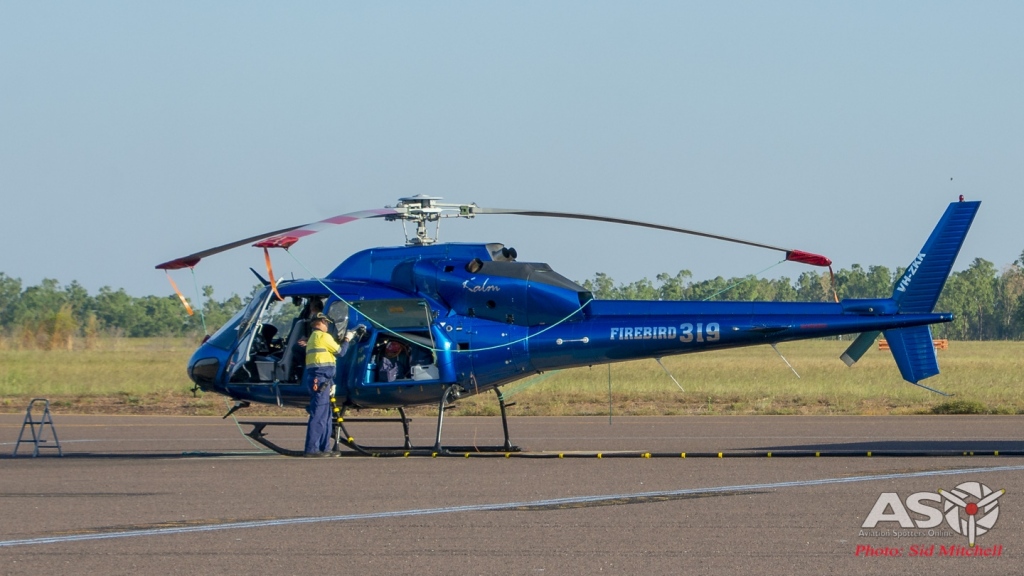
VH-ZKK another AS355 operates as Firebird 319.
Eurocopter AS365N2 Dauphin
The Dauphin, is deployed with two examples by DFES in Western Australia this season. Firebird 661 and 662 with 1000 and 1200 litre tanks fitted respectively. Firebird 661 is also fitted out for surveillance and reconnisannce as well.
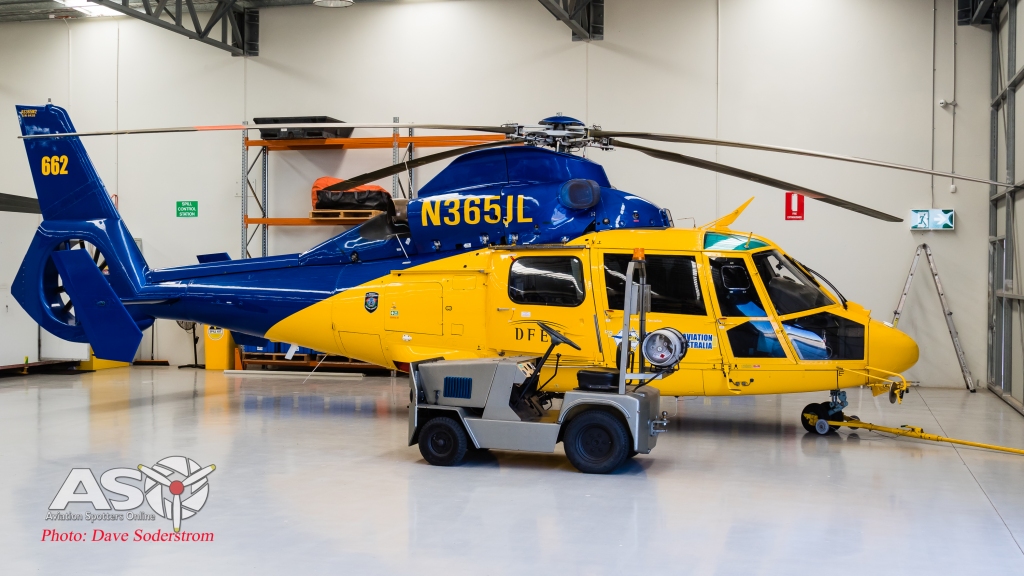
N365IL is seen at McDermotts base in Jadacot.
Airbus Helicopters EC-120
The Victorian Government through the NAFC has three EC-120 Helicopters on contract this season. Operated by Jayrow and Microflight Helicopters from Moorabbin Airport. The type is a very suitable platform for the Firebird role in which it is employed. The large windows allow for great air observation of fire fighting activities by Helitaks. Its high speed makes it ideal to get quickly on scene in preparation for fire bombing. The information from the Firebird is then passed onto the incident control team.
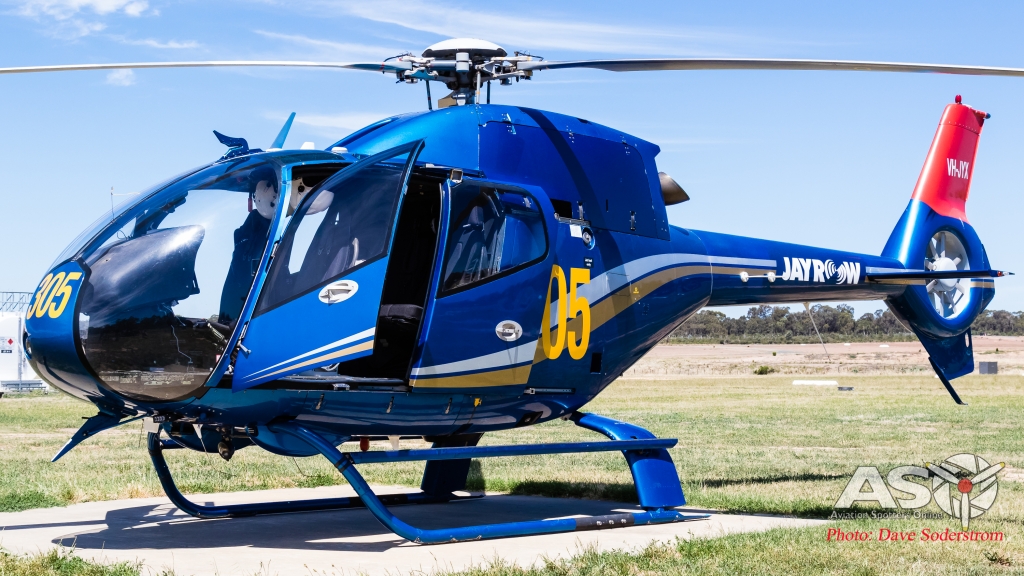
Jayrow Helicopters EC-120 VH-JYX operated as Firebird 305 this season. Seen here deployed at Firebase Bendigo.

Microflite’s EC-120 VH-ECP operates as Firebird 306. A very busy airframe it was based predominantly based at Essendon Fields and operating with the Aircrane. It is seen here departing Wesburn firebase during the Cambarville fires.

Firebird 309 VH-KXX working alongside Birddog 370 and many other firefighting aircraft to help contain the Bunyip fires which started from lighting late Friday 1stMarch 2019.
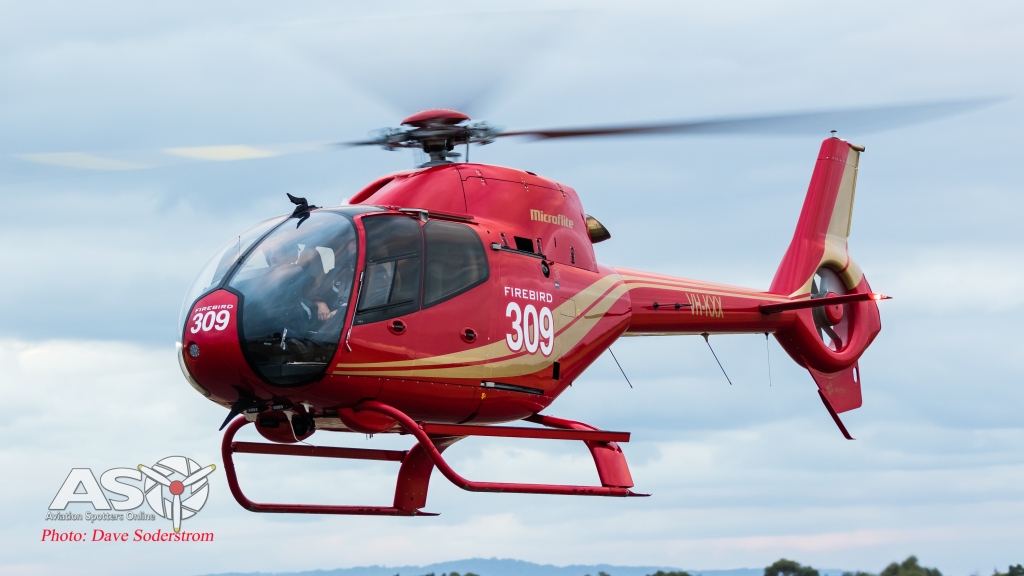
Microflite also had EC-120 VH-KXX operating as Firebird 309. Seen here returning after working the fire in the Bunyip forest.
BK-117
A type seen regularly in New South Wales is the the MBB/Kawasaki BK-117. The helicopter is extremely versatile and can be used for a variety of tasks, including water bombing, reconnaissance, mapping and aerial incendiary work. When used for water bombing operations a tank with up to 1,000 litres of water and retardant is fitted. It can also be used to winch Remote Area Firefighting Teams and Rapid Aerial Response Teams into difficult to reach areas.
Helitreck owns and operates five Kawasaki BK117B2 helicopters which can be used for water bombing operations with up to 1,000L of water and retardant. Since 1999, the company has operated as a contractor to NSW Rural Fire Service.
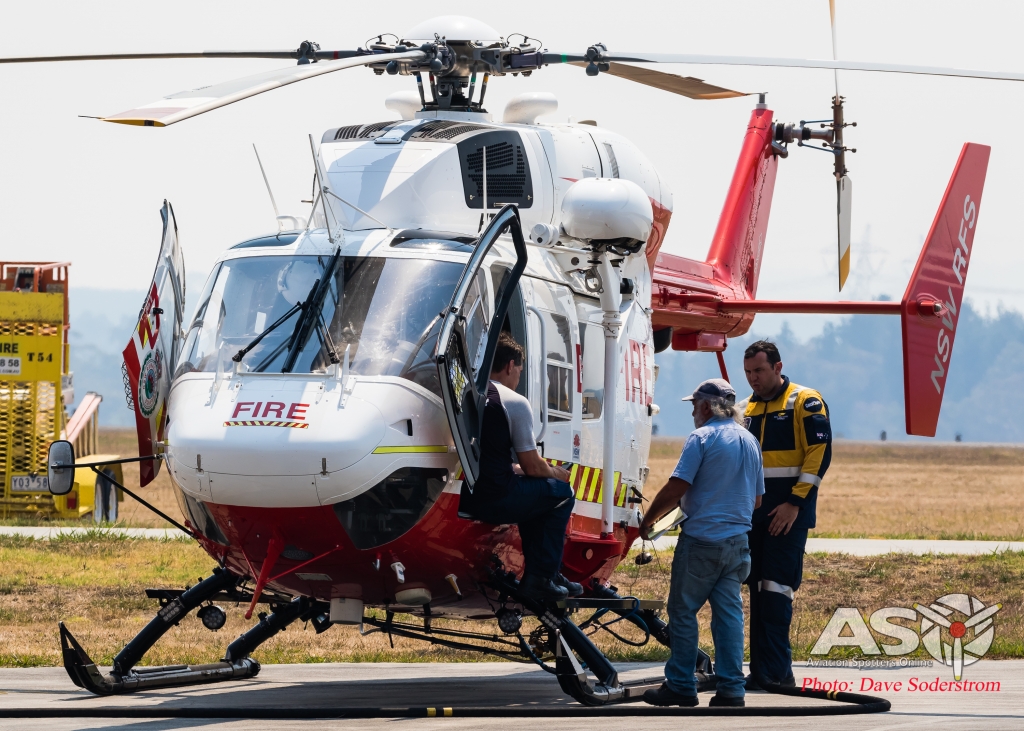
NSW RFS BK117, Helitack 202 is seen on arrival at Latrobe to support the fire fighting effort.
Sikorsky S-76
Last year we spoke about the important role of the Sikorsky S-76 in the Night Fire Bombing role. This season at the culmination of the work up phase the S-76 operated by Coulson Aviation was put to work. The S-76 which acts as the Supervision aircraft has an air attack office on board. The role he conducts is too safely guide the helitak aircraft to their field of operations and conduct the fire bombing drops based on the reconnaissance of the area that was done prior to working the fire ground. Once water bombing has begun the infrared camera on the single example of the Sikorsky S-76A in operation records and also monitors hot spots which will need further dousing. The Coulson Aviation team who were operating the machine are extremely skilled, with some of the crew with over 20 years of fire bombing operation experience.
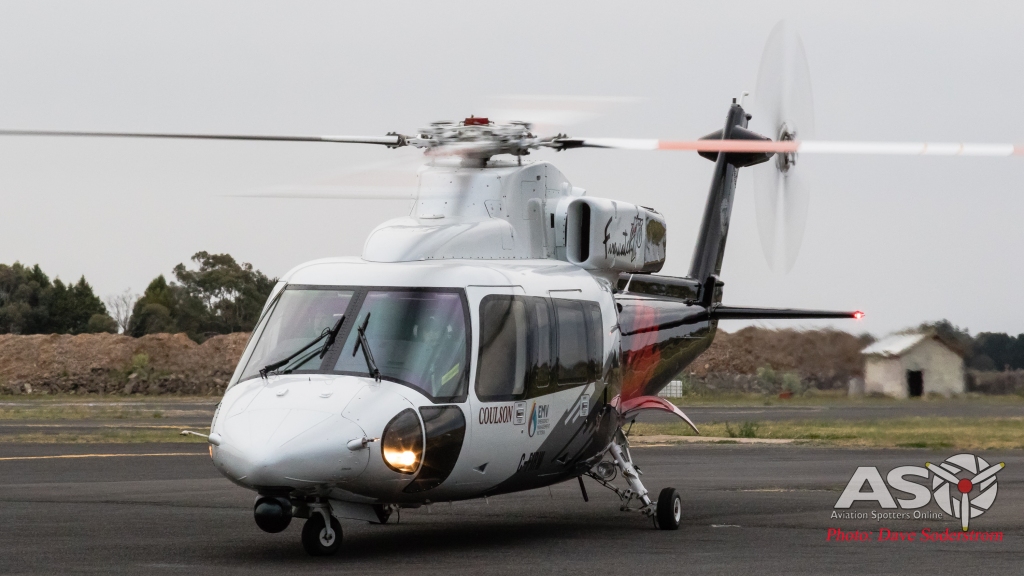
Seen on the final night of night fire bombing training the crews have proven the concept to work. It wasn’t long prefer it was being used on large fires across Victoria.
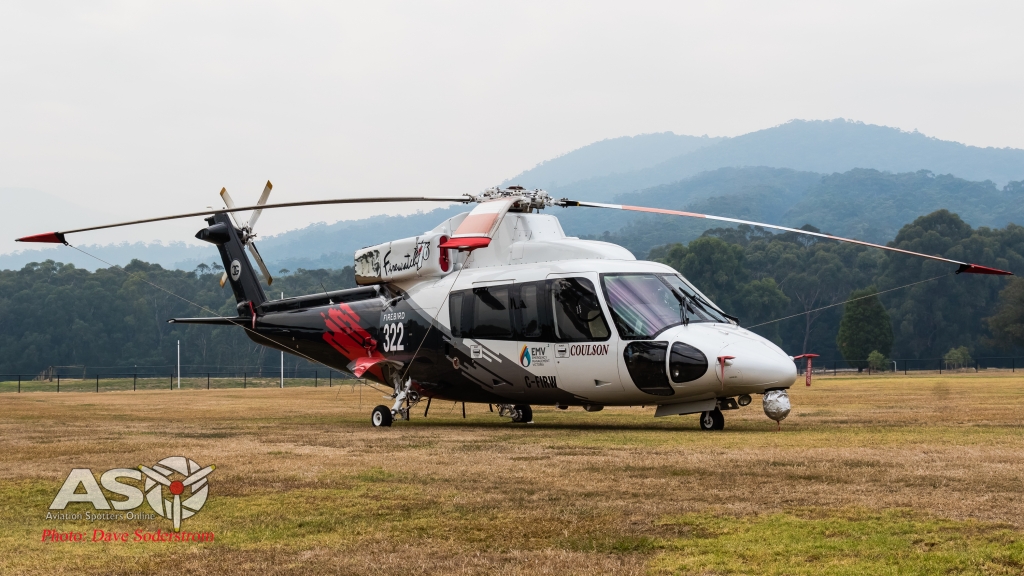
Firebird 322 or C-FIRW has a moment of rest after working a night shift on the Wesburn Fire.
Bell 205
A small fleet of the ubiquitous Bell 205 or the civilian version of the UH-1 Huey are in use in Australia this season. Valhalla Helicopters returned again this season with three machines from their fleet. This included Bell 205 C-GRUV. As seen in the photos the Valhalla machines are some of the cleanest looking examples of the type in operation I have seen. Originally built for the use by United Arab Emirates Air Force Silāḥ al-Jaww as-Sulṭāniy ‘Umān (Royal Air Force of Oman), this particular machine was built in 1975.
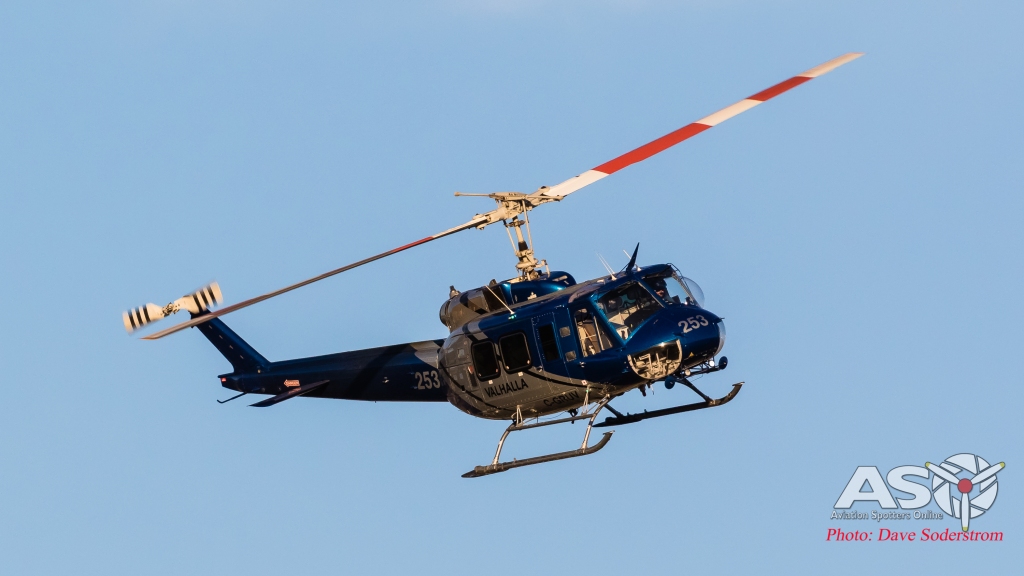
Helitak 253 C-GRUV depends into the Firebase near Launceston.
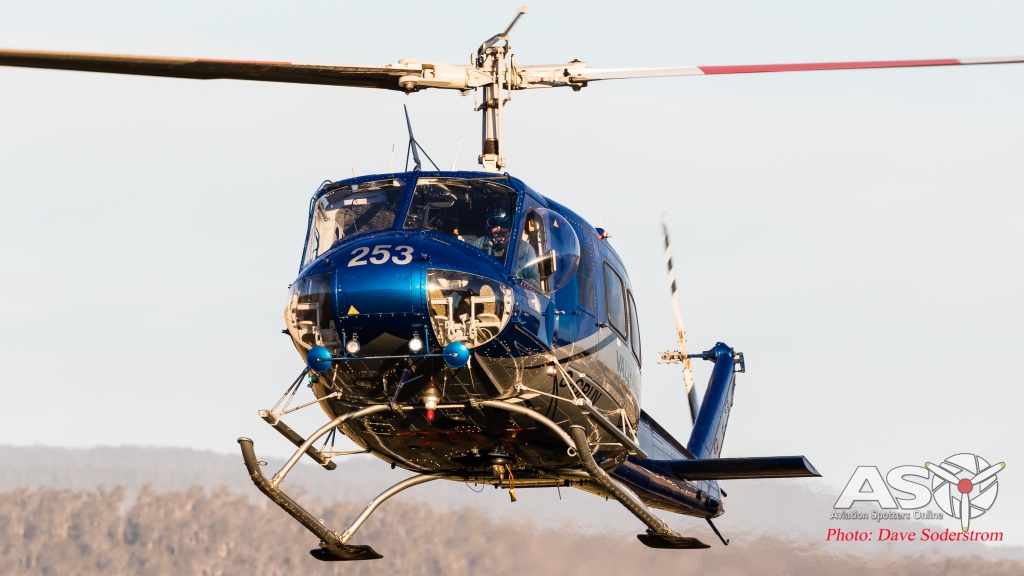
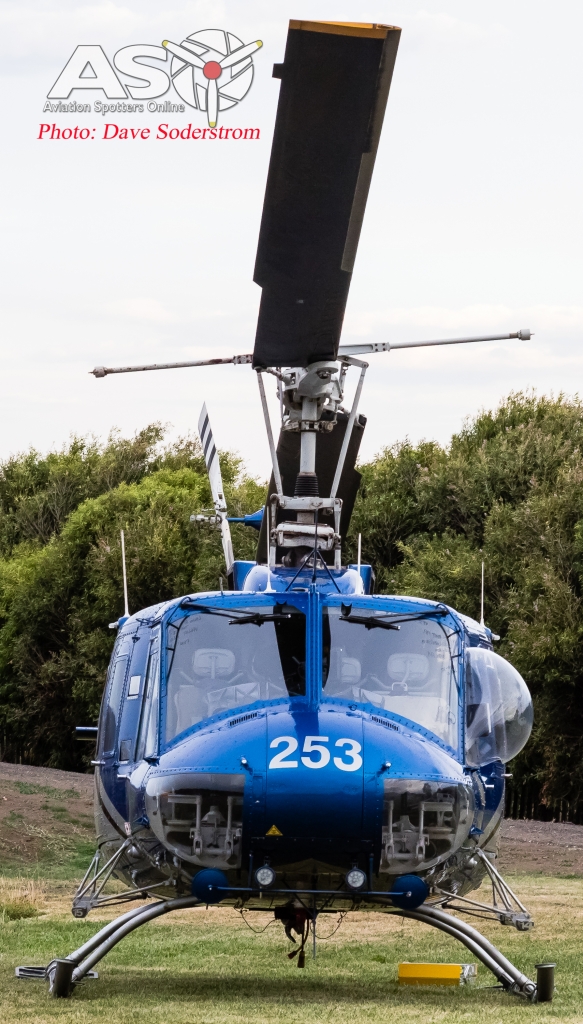
C-GRUV has like most Helitaks been fitted with a bulbous window for the pilot to look down on their drops, sling load or bucket.
Bell UH-1 Huey
Touchdown Helicopters operate several examples of the UH-1 Huey in the fire suppression role. All are equiped with Bambi Max multi drop aerial fire fighting buckets which are also configured with foam-injection capabilities. The buckets have a 1230 litre capacity. VH-OXE and OXI were both noted flying into Rockhampton Airport in support of the fire which was very active at the airport during December 2018.

Touchdown Helicopters UH-1H Iroquois VH-OXI flying as Helitak 229. Is seen here at Bathurst Airport NSW.
Bell 206 Longranger
Another type from the Bell factory is the smaller Bell 206 Longranger. Several examples are tasked for operation during the fire season. It is particularly well suited to the supervision of firebombing operations with its high speed enabling it to keep up with the largest of firebombing helicopters and the ability to slow down and loiter in the fire area. When working as a ‘firebird’ the primary responsibility for the crew is to supervise aerial fire fighting operations and to collect intelligence information about a fire and pass it on to the incident management team.

Heliwest Bell 206 VH-VJG Seen here working a fire in Western Australia (Image provided by Brenden Scott)

Paton Air Bell 206 VH-FKT seen here as Firebird 315 on standby at Mansfield.
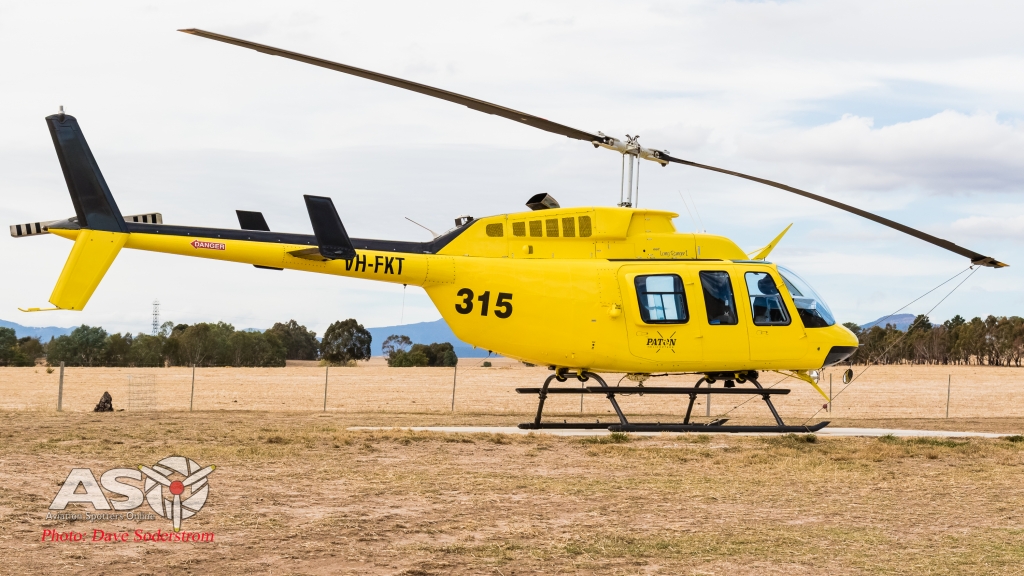
For an airframe built in 1979 Paton Air’s Bell 206L-1 certainly doesn’t look its age.
Bell 212
A well seasoned campaigner here and abroad for fire fighting is the Bell 212. Six of the type are on contract for the season. When fitted with the 1477 litre belly tank, the versatile Helitak is frequently on task. Victorian operators like Microflight, Jayrow and Kestrel all operate the type. Some of the 212s on contract can be fitted with a rappel line system to insert specialist smoke jumpers into areas that require a back burn where transport by vehicle is inaccessible or safe.
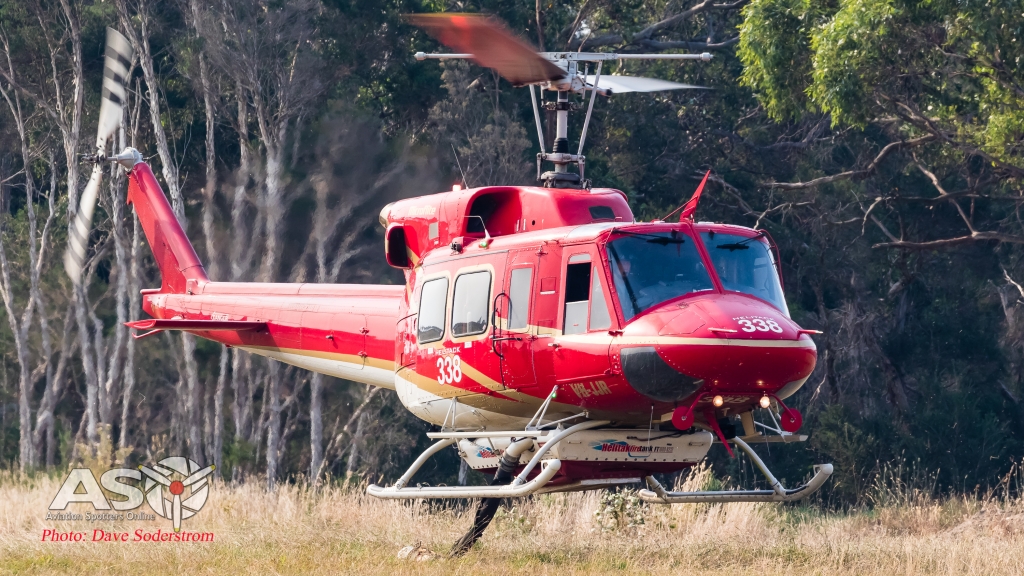
Built in 1986 for the Royal Thai Army. It then became the personal transport for HRH Crown Prince Maha Vajiralongkorn. Imported into Australia in 2008 it is now part of the large Microflight fleet based at Moorabbin Airport in Victoria. Helitak 338 was used extensively during the Victorian bush fire season.

VH-JJR seen here working the Wesburn Fire.

Kestrel’s VH-NSY was built in 1977 on an order for Bristow Helicopters in Great Britain. Today it flies on as Helitak 330 and was seen here on standby at its Firebase Shepparton.
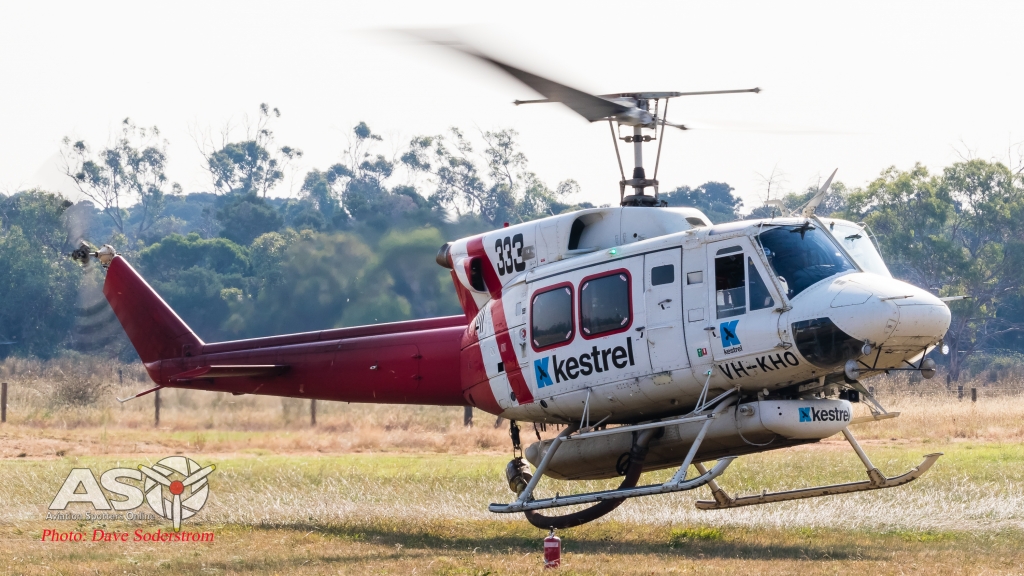
Kestrel VH-KHO was built in 1981 for the Kaijō Hoan-chō (Japanese Coast Guard). Now flying as Helitak 333 and is seen here departing to work on the Grantville fire.
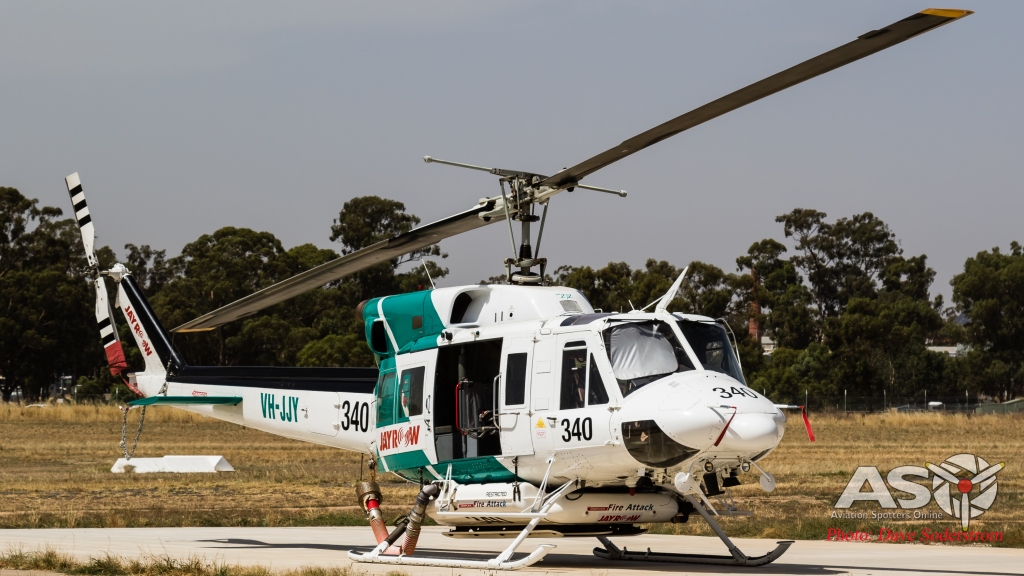
Jayrow Helicopters Bell 212 VH-JJY, was built as JA9536 and flown by Kaijō Hoan-chō (Japanese Coast Guard). It flies as Helitak 340 and is seen on standby at the Bendigo Firebase.
Bell 214
The bigger version of the 212 is the Bell 214 ‘Big Lifter’. It is one of the more numerous rotary types on contract this season again. Some twelve are deployed across the country with Tasmanian, New South Wales, Victorian, and Western Australia fire agencies. Fitted with a 2,650 litre belly tank or Tsunami tank which is able to be filled within 35 seconds. The 214 is the most powerful single engined helicopter in the world.
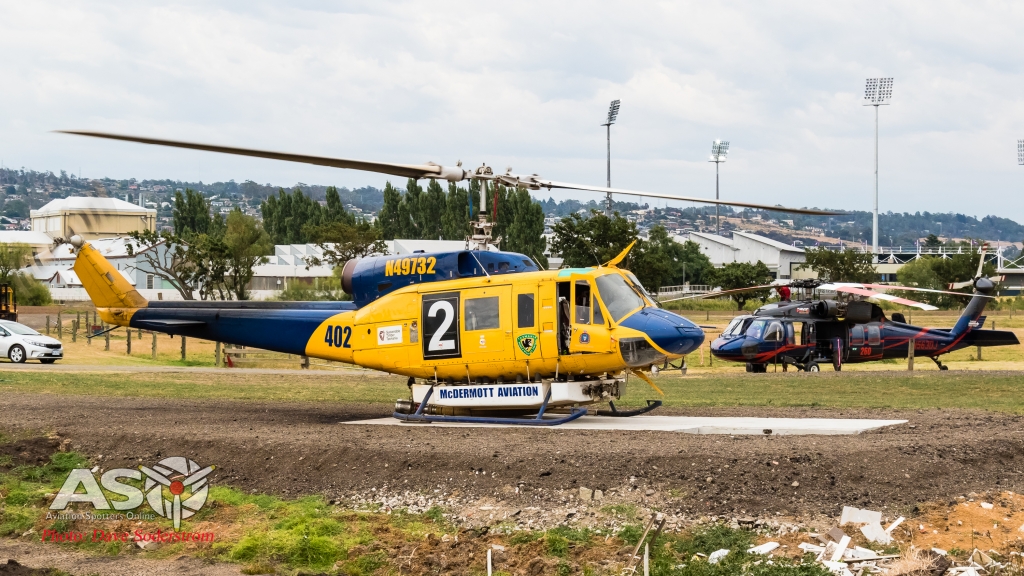
Another part of the large McDermott Aviation fleet. Bell 214B-1, N49732. It was built for use by Silāḥ al-Jaww as-Sulṭāniy ‘Umān (Royal Air Force of Oman) in 1976. Now flying as Helitak 402.

N216PJ is seen in Western Australia before it moved down to Tasmania. (Image from Brenden Scott)
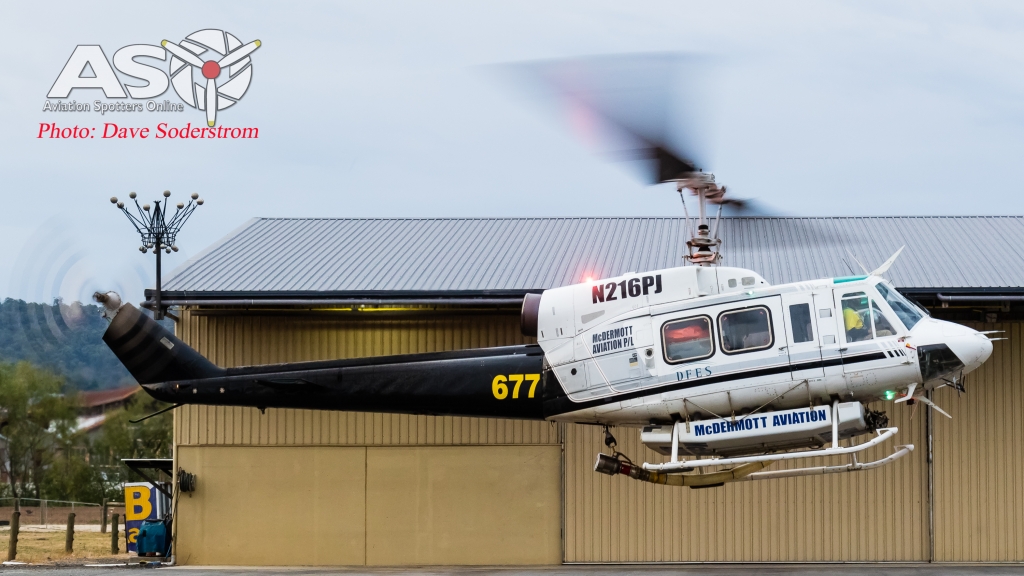
Built in 1981 N216PJ is part of the large McDermott Aviation fleet. Seen here landing after working the large fires in Tasmania. Helitak 677 joined the huge fleet of air assets working the large blazes in the state.
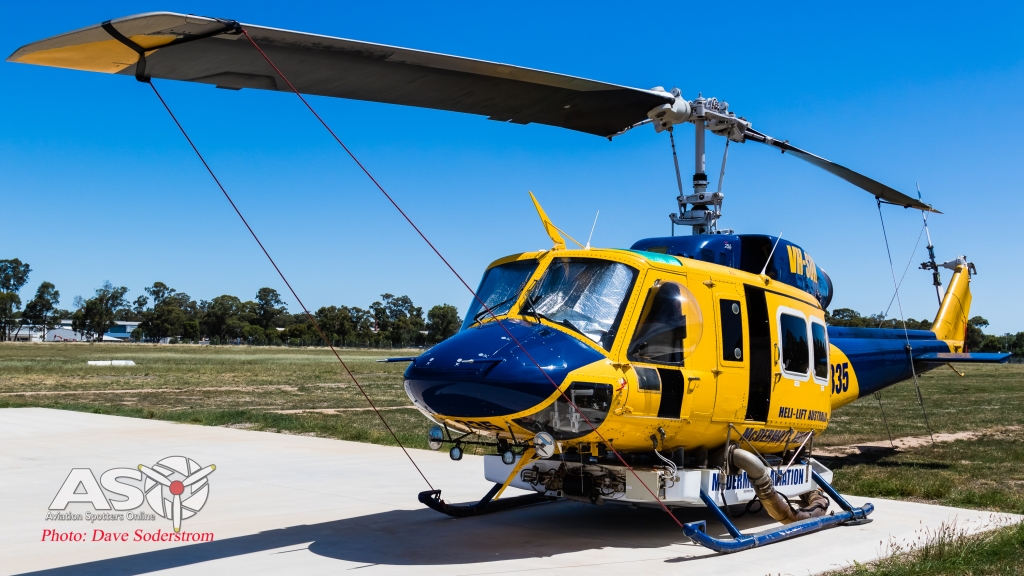
Seen at Firebase Bendigo is Helitak 335 VH-SUH.

McDerromtt’s modern service facility at Jandacot is vital to the companies fire fighting operations.

P2-MLJ flying as Helitak 674 seen at its base at Jandacot in Western Australia.
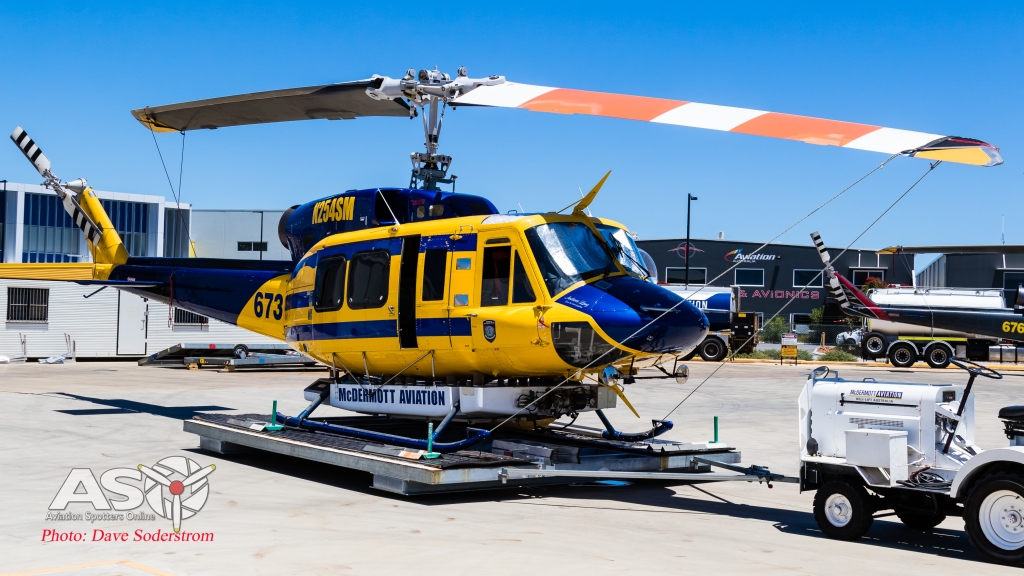
N254SM operated as Helitak 673 this season. It is seen at McDemott’s Jandacot base.

Flying with the DEFS this season is Helitak 676, VH-SMI.
Bell 412
The twin engined Bell 412 is a popular type in the fire frightening role across the world. Commonly fitted with a 1400+ litre belly tank, the type is able to get into areas where the larger machines can’t. The tank is also able to have a foam concentrate injected to further increase the effectiveness of the tank during a drop. Both the NSW and Victorian Governments have contracted five 412’s this season.
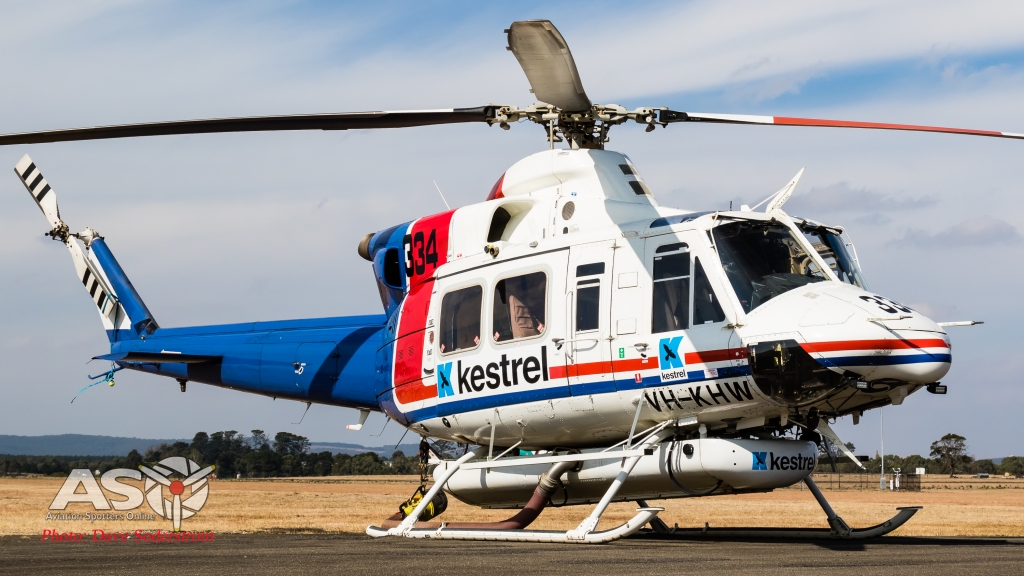
Kestrel’s Helitak 334 now flies as VH-KHW. Originally built for the Japanese Fire and Disaster Management Agency as JA6792. Flying from the Aichi Prefecture, as part of the Disaster Prevention Air Corps From June 1996 until joining Kestrel’s fleet in April 2018. Seen here on Standby at Firebase Ballarat 2019.

VH-KHU was also part of the fleet in the night fire fighting trials.

Kestrel’s Bell 412 VH-KHU flies as Helitak 346

Kestrel’s Bell 412 VH-XCW flies as Helitak 345. Seen here at rest at Bacchus Marsh airfield.

Kept busy through out the season Helitak 345 returns from fighting the fires in South Eastern Victoria.
Bell 230
A unique aircraft in the aerial fire fighting fleet and even more so as a type on the Australian VH register. Rotor lift Aviation from Hobart in Tasmania operate Firebird 700, VH-XCW. The aircraft was previously in aeromedical configuration with Careflight in Queensland.
Now operating in the Firebird role the aircraft was very active in the firefight around Southern Tasmania this season. With a light passenger loading and full fuel tanks the aircraft has approximately fours endurance which is extremely useful in the fire observation and control role.
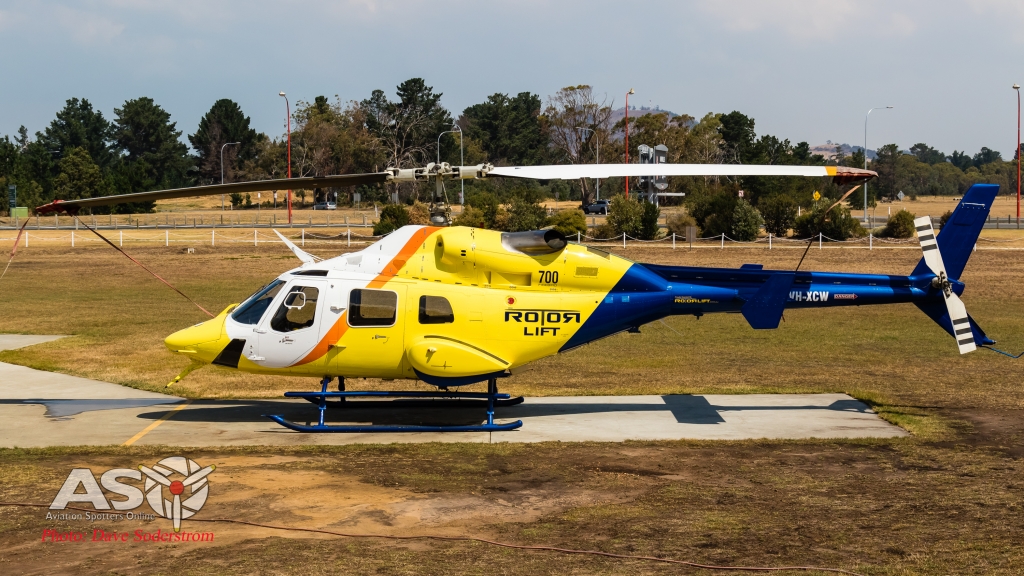
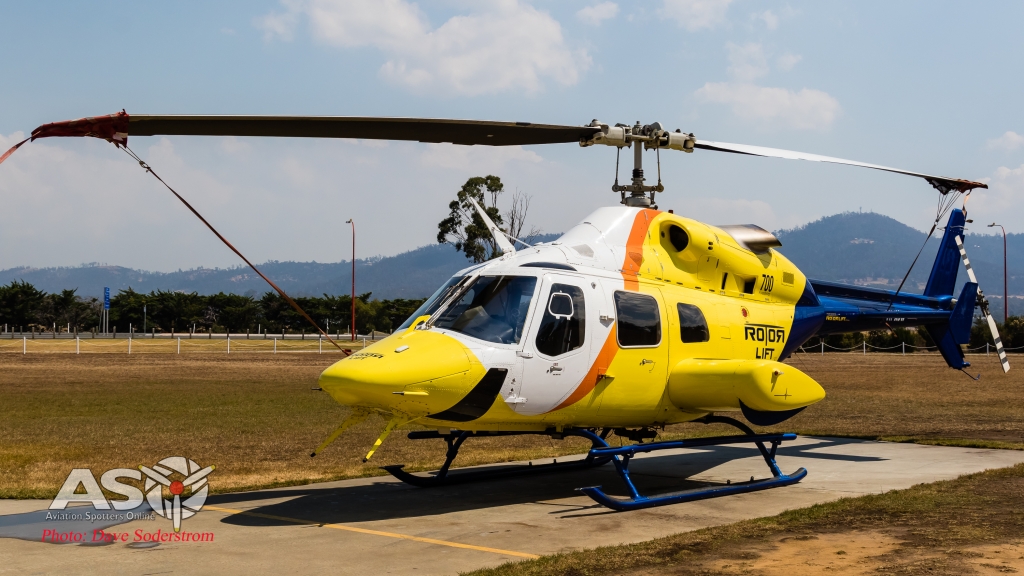
Seen as rest at Rotorlifts base in Hobart, Tasmania.
Erickson S-64 Air-Crane
As was noted previously, Eriskson and Kestrel again teamed up to bring in and operate the Air-Crane this season. This long standing operation see the merging of two well experienced companies who deploy six of the Air-Cranes across the country. The pilots and maintainers are very seasoned campaigners, with some having over twenty plus years of experience with the type. Pilots from New Zealand, Canada, United States are among some of the countries that the experience is drawn from.
These large Type 1 helicopters are well known in Australia now having been deployed continuously for over 20 years now. This season saw the machines working fires across the country with high utilisation. The high tempo was made more so with the incident of N173AC crashing into a dam in South Eastern Victoria. Thankfully the three crew were uninjured and the Air-Crane was recovered and will be rebuilt to fly again. Being one machine down put a large workload on the remaining five machines which saw them being moved to where they were required and being deployed into other states.
The six machines on contract this season were:
- N176AC ‘Lucille’
- N173AC ‘Christine’
- N194AC ‘Delilah’
- N218AC ‘Elsie’
- N189AC ‘Gypsy Lady’
- N154AC ‘Georgia Peach’
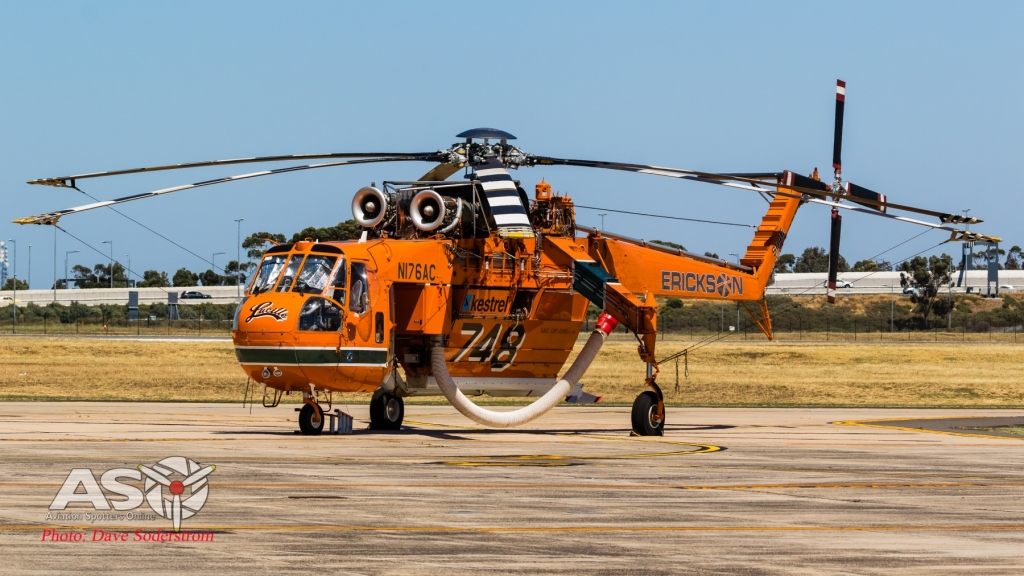
N176AC ‘Lucille’ sits at rest at Essendon Fields Airport
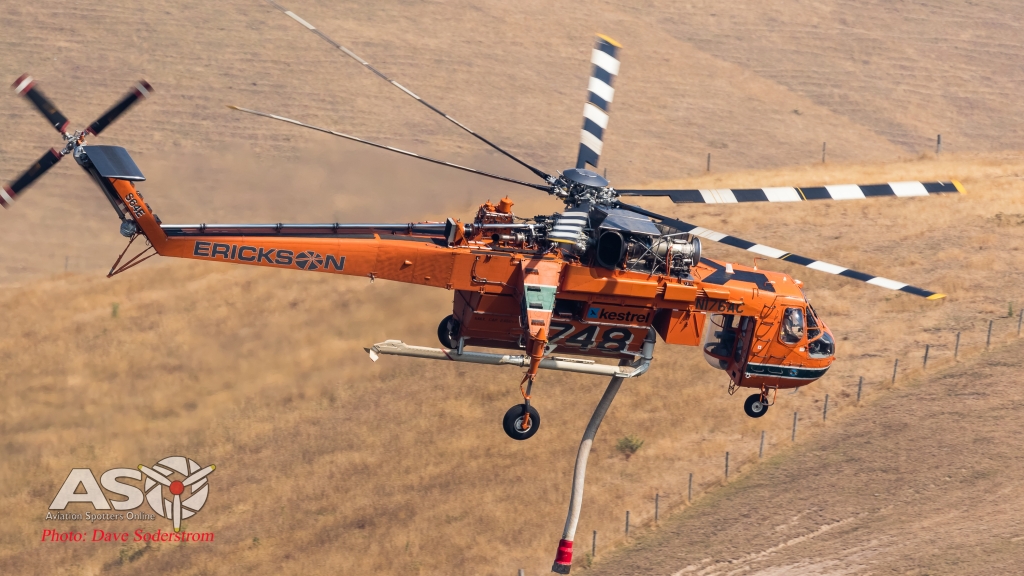
Tank full Helitak 748 heads off for another drop.

N176AC Helitak 748 or Lucille about to draw water while working the Wesburn fires.
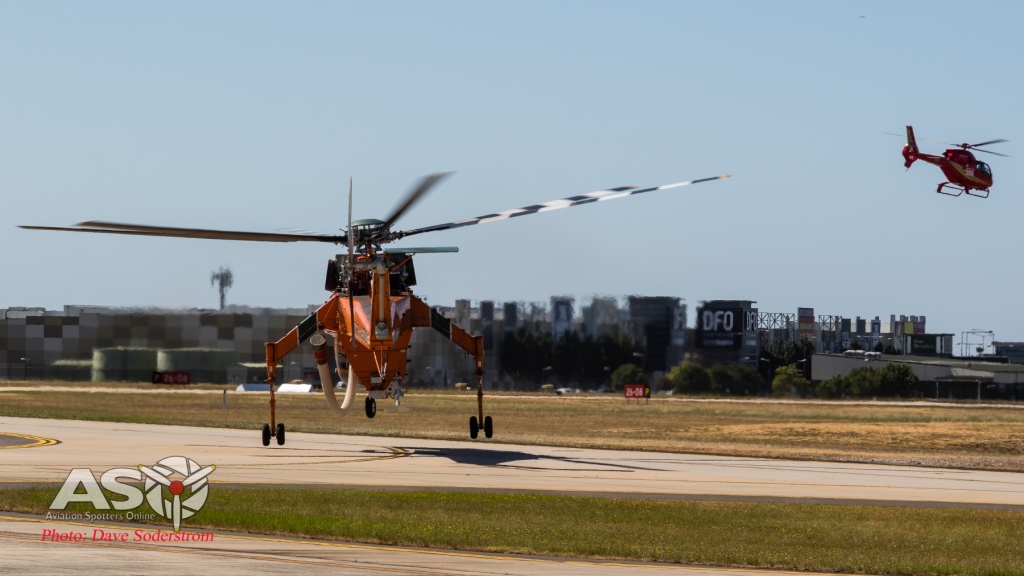
Air-Crane departing on another mission with Firebird support.

N173AC is seen at its Essendon Airport base. This was the airframe which was involved in the incident this year.
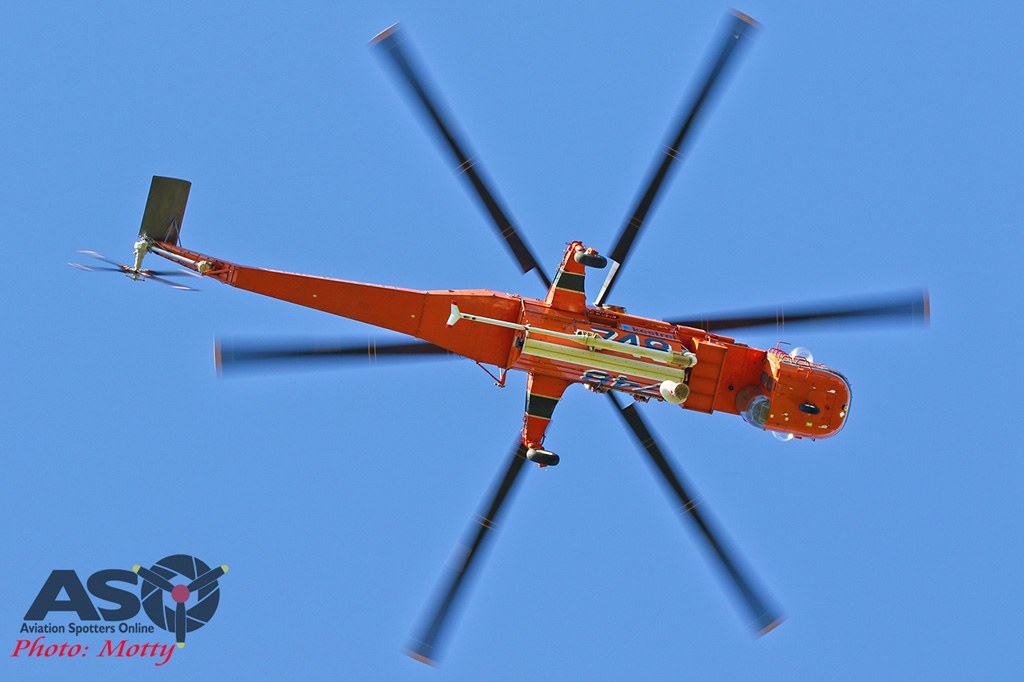
N176AC Helitak 748, works the fire near RAAF Williamtown.

N194AC, Helitak 342, Delilah lands at the refuelling base at Gembrook.
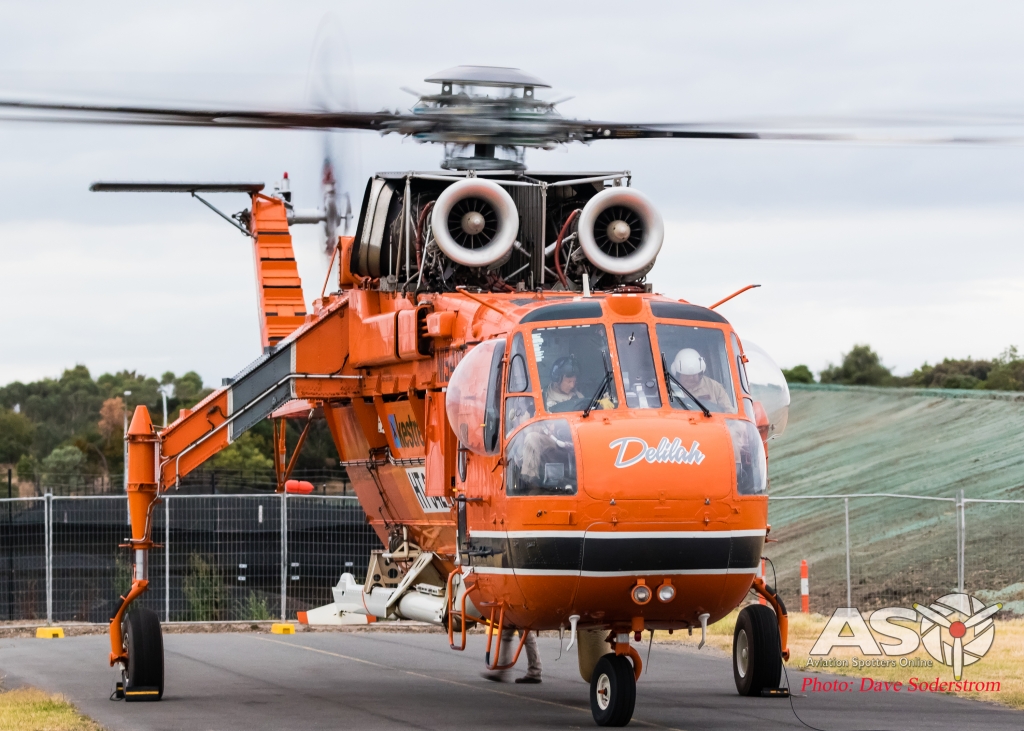
N194AC, Helitak 342 aka Delilah, shuts down at Moorabbin Airport after working on the Bunyip Fire.
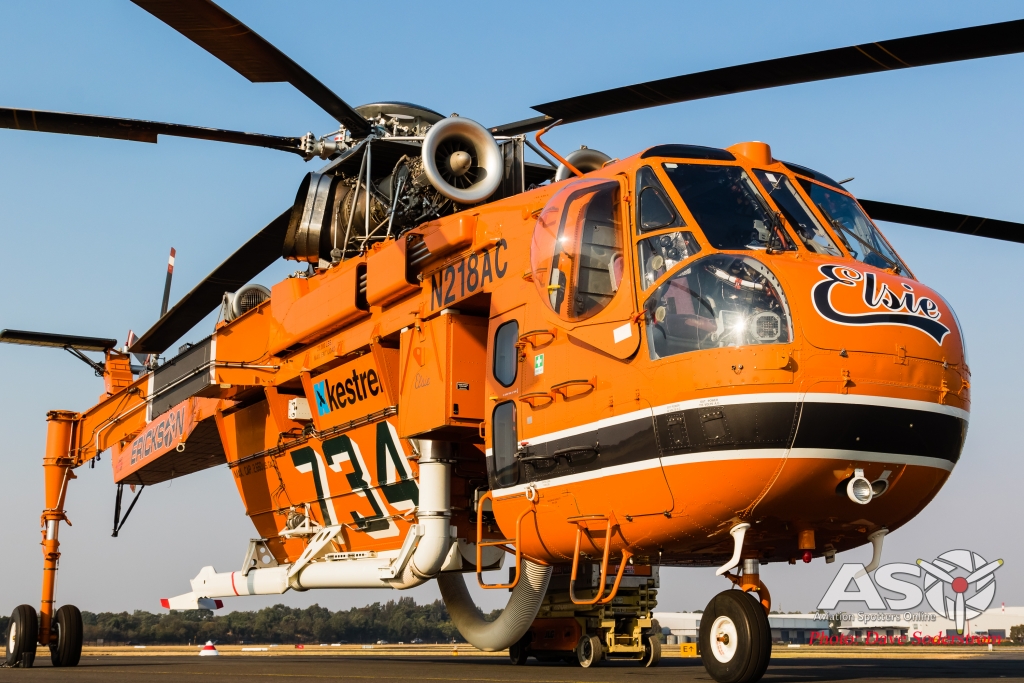
N218AC Helitak 734 was based in South Australia for most of the season. It did spend some time in Victoria during that states huge bushfires that erupted later in the season. Elsie, is seen here at Moorabbin Airport.

N154AC Helitak 733, Georgia Peach is seen on task at a fire North of Perth. (Image courtesy of Brenden Scott.)
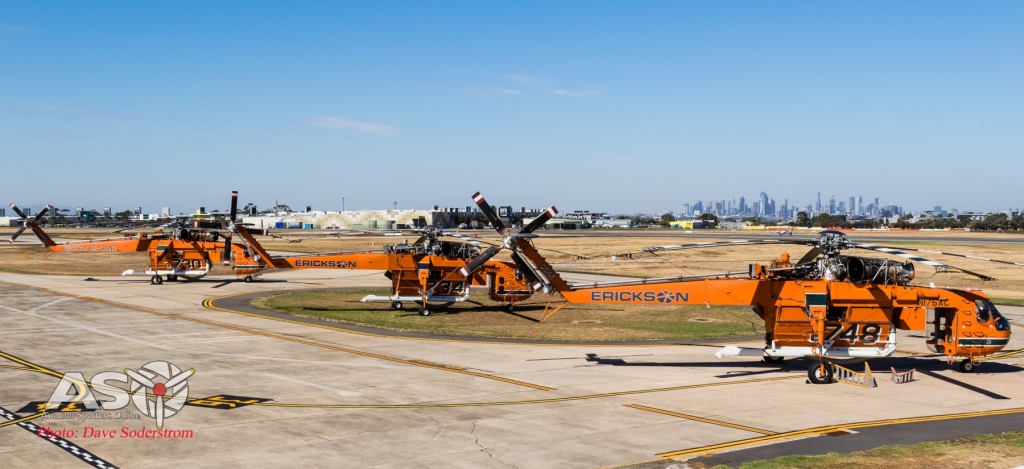
End of season, three of the Air-Cranes await flights to Geelong Docks for shipment back to the Northern Hemisphere.

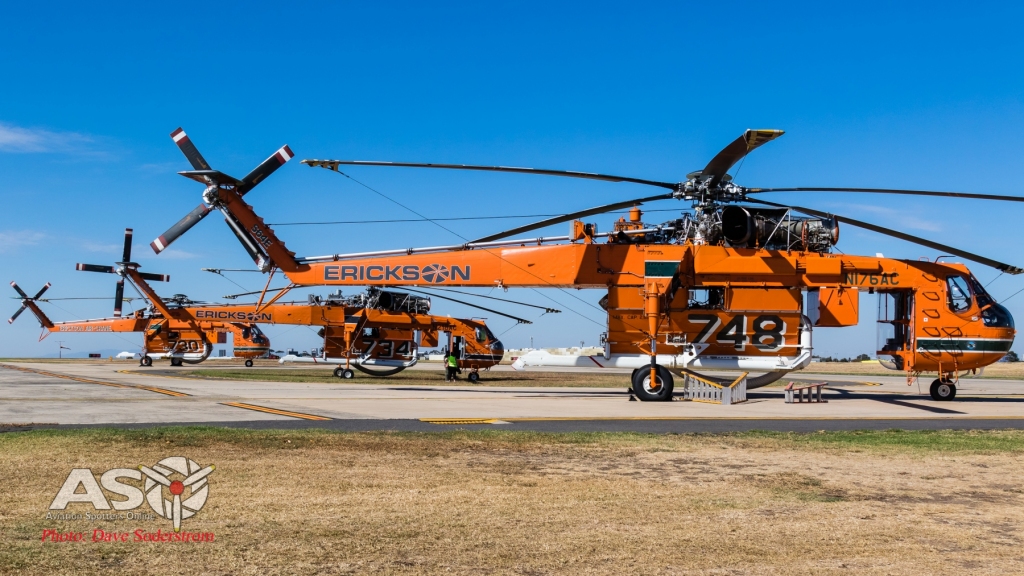
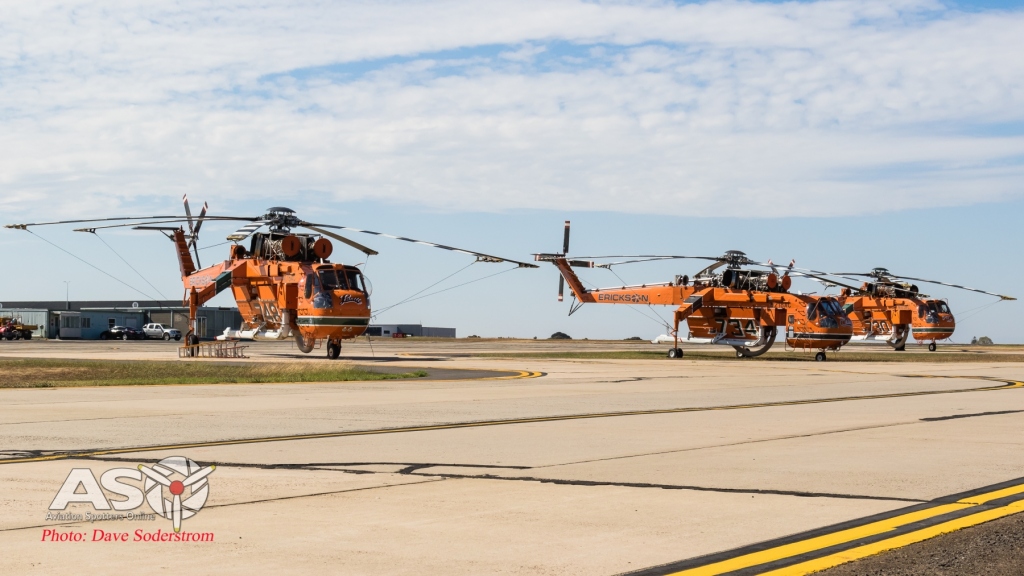

An Erickson crew member prepares to launch N154AC ‘Georgia Peach’ on another mission. (Image from Brenden Scott)
Sikorsky UH-60 Blackhawk
Australia was host to its largest fleet of Blackhawks fighting fires ever this season. Timberline again in cooperation with local operator Pay’s from Scone NSW brought two UH-60A Blackhawks to work on call as required contracts. These two machines were in operation across NSW, Victoria and Tasmania blazes. Another UH-60 operator in Australia this season is Touchdown Helicopters. Working in a partnership with the owner of the helicopter, Firehawk Helicopters from Leesburg Florida. The partnership has brought another ex US Army UH-60A Blackhawk modified for the fire fighting role. All three Blackhawks were flown in operations with the Bambi bucket on a long line.
Life in the airframe thanks to Australian involvement.
As the Blackhawk and Seahawks enter the civilian market from military stocks, the use of the machines for firefighting works sees companies develop new technologies for these airframes as the retire from military service. One such company is Queensland based Helitak Fire Fighting Equipment. The company has developed a underslung belly tank for the Blackhawk with the design on show at this years Australian International Airshow at Avalon. Paul Blundell the Operation Manager at Helitak and Jason Schellaars took time to show ASO over the tank and its features during the show.
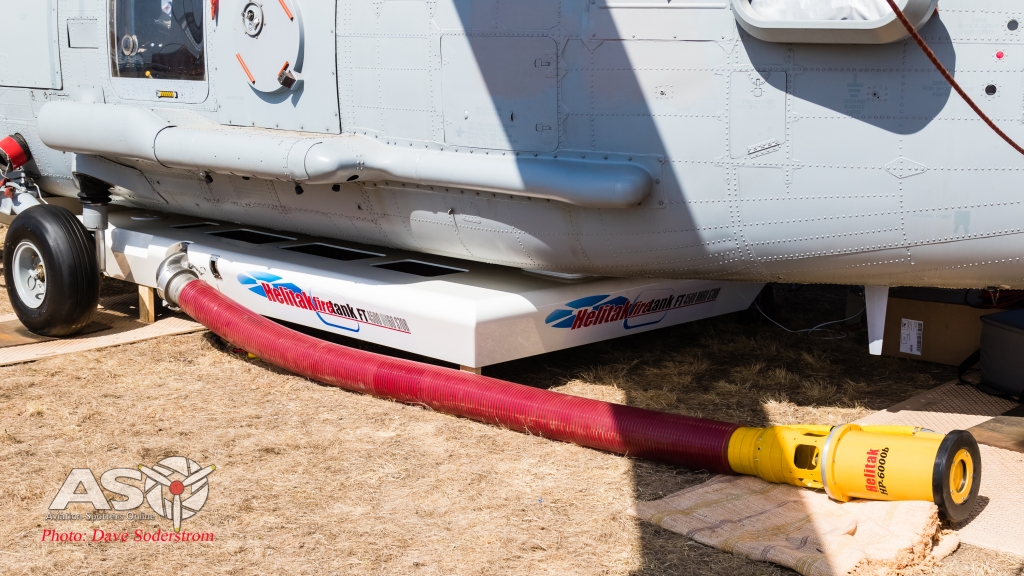
With a capacity of 4500 Litres and electric control of the drop distribution the tank has been designed so it can be fitted in as little as 25 minutes. The tank is fitted with a 6000 litres per minute fill pump which enables it to be filled in 46 seconds. The impressive design has been ordered by several overseas companies. Some of the unique features of the design also include:
- The Helitak designed bomb doors are over 2m in length providing an unequalled delivery of controllable water to the fire ground.
- Next generation Programmable Logic Controller that provides complete reporting of tank operations and telemetry analysis via the cloud to the operators operations centre.
- A proven fire suppression tank with operators enjoying over 1000 hours of operations

Image provided by Helitak showing the tank in its extended (full) position.
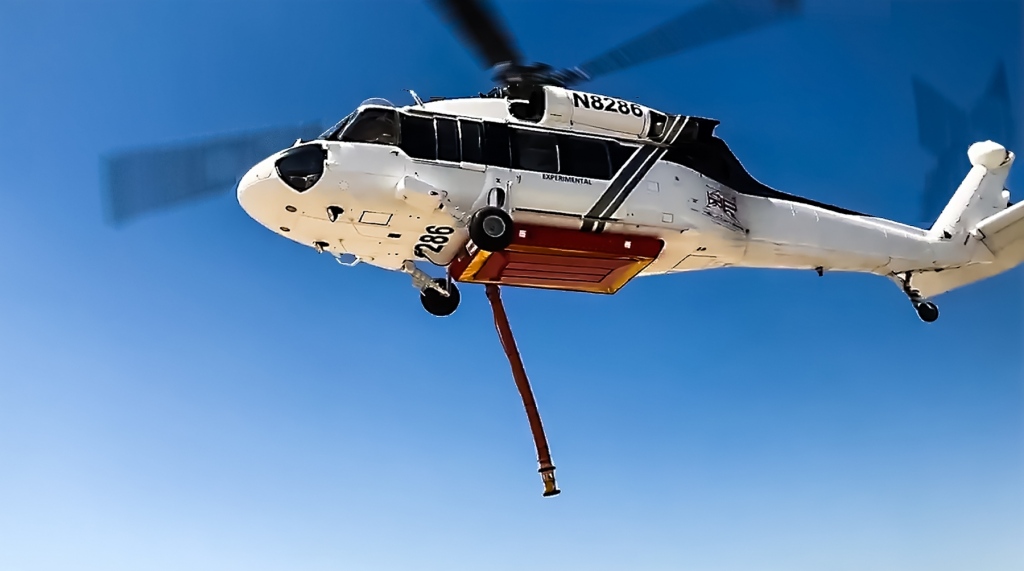
Image provided by Helitak show the tank in the stowed position.
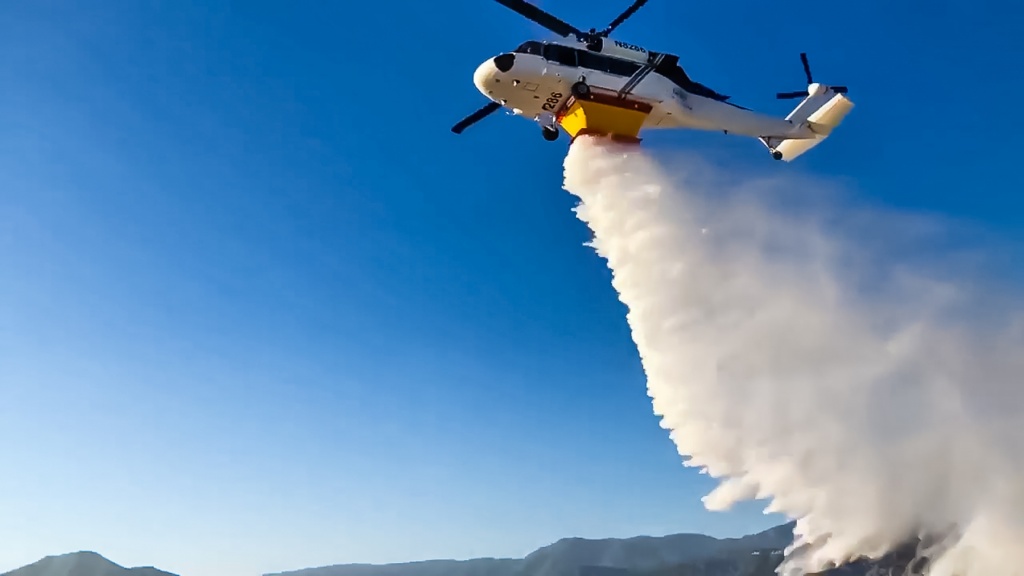
Image provided by Helitak, showing the tank in its working position.
The company is also currently in discussions with hopes of supplying the tanks to a new Australian Blackhawk/Seahawk operator,Skyline Aviation Group. A helicopter operator out of the Newcastle and the Hunter Valley region’s who announced the acquisition of eleven former Royal Australian Navy S-70B-2 Seahawk helicopters. All of which are now at the companies headquarters awaiting conversion.
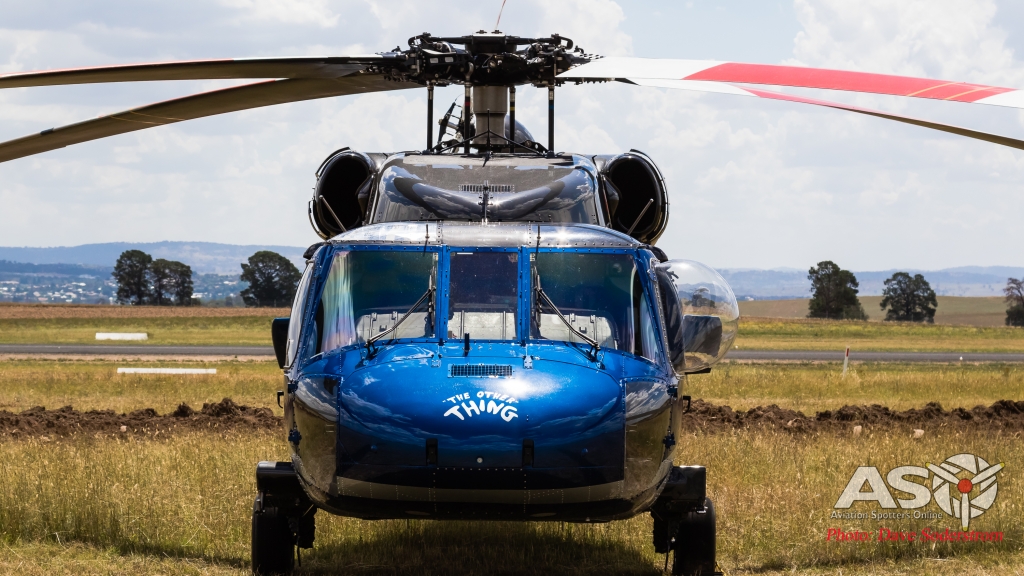
‘The Other Thing’ was deployed in NSW and Victoria this year working on several fires.

N274TH ‘The Other Thing’ at rest at Bathurst NSW.
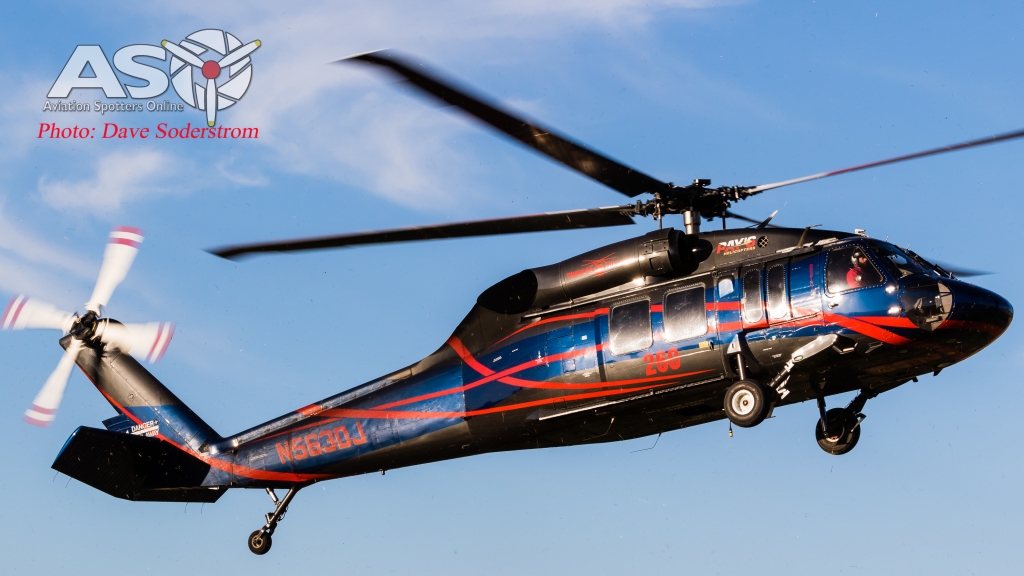
N563DJ deployed to Tasmania to fight the large fires that where across the state.
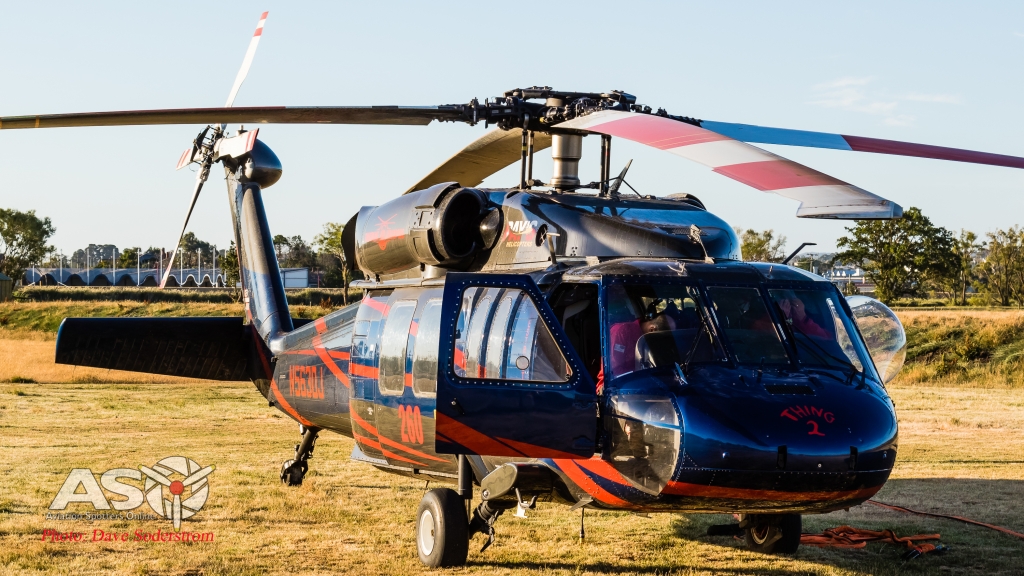
N563DJ ‘Thing 2’ at rest after working the fires in Tasmania.

N563DJ returns to Moorabbin Airport after working the Bunyip fire in Victoria
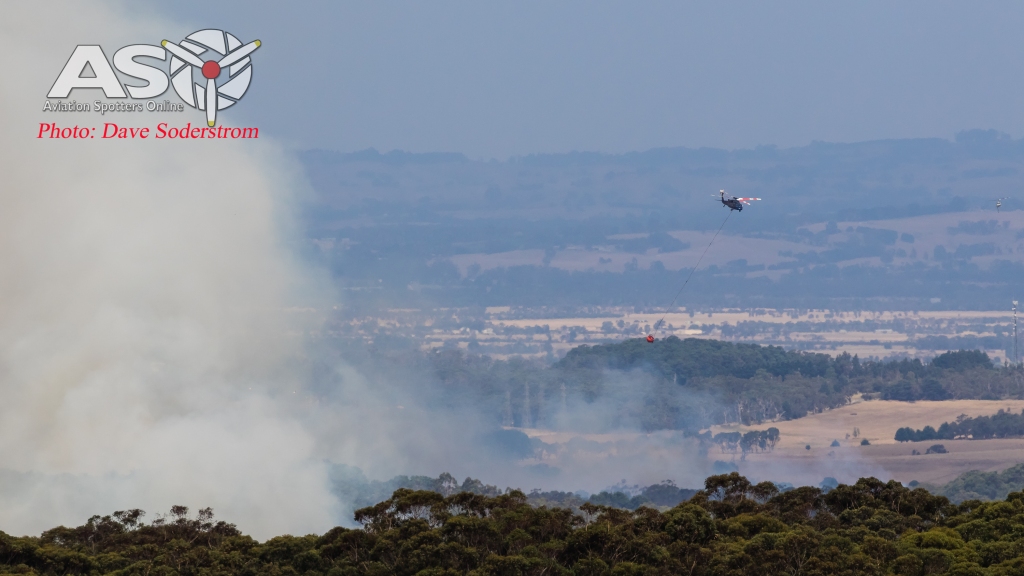
N563DJ leaves the area to refill its Bambi Bucket

N563DJ with its Bambi Bucket on the long line heads off to refuel.

N9FH returns to refuel after working the Wesburn Fire.
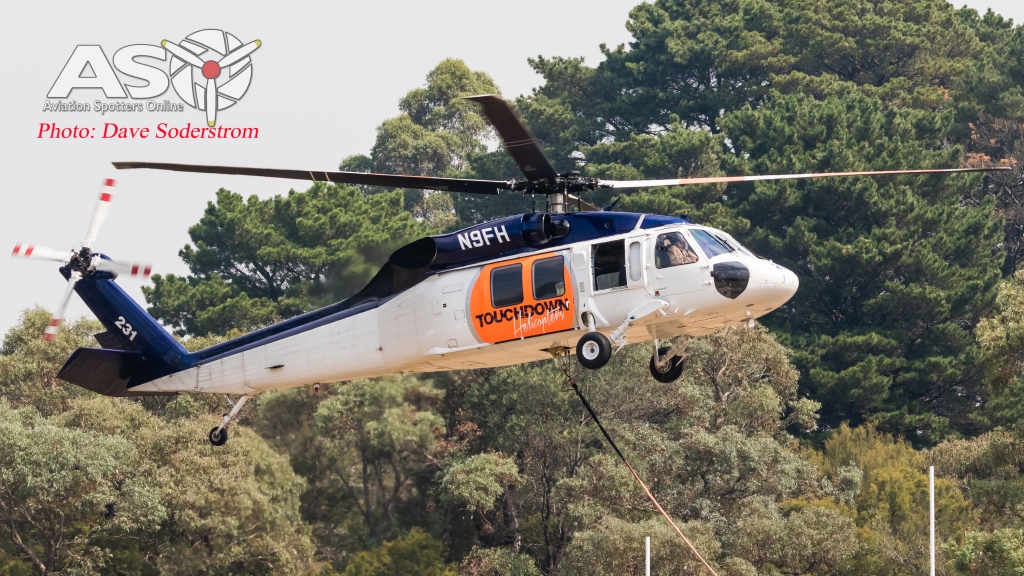
N9FH flies at Helitak 231
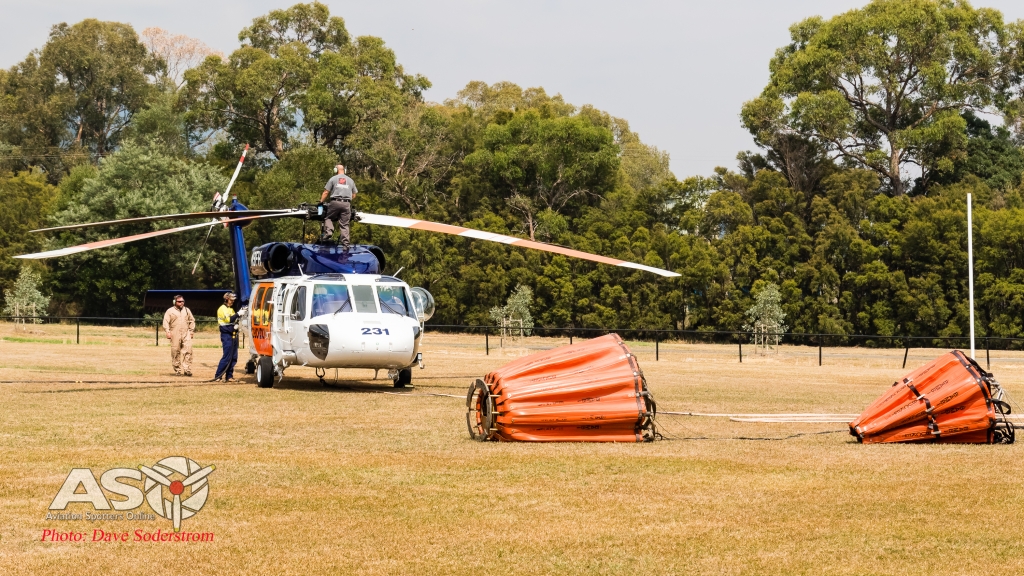
N9FH with its primary Bambi Bucket and secondary smaller bucket on standby should it be needed.
Sikorsky S-61
This season Coulson Aviation Australia has supplied three Sikorsky S-61N Type 1 helicopters based across Victoria. Helitak 347 C-FXEC in its striking black and white livery was deployed from Colac most of this season. Helitak 348 N161CG, was based most of the season from the fire-base at Mansfield in Victoria’s high country. The third S-61, Helitak 349 C-FIRX operated from Ballarat providing both a daytime and night time fire-bombing services.
Helitak 349 was part of the fleet involved in the Night Fire Fighting trial and fire deployments. Helitak 349 operated at night at various locations in the rugged eastern part of Victoria and the south eastern interface areas of metropolitan Melbourne during the season. An Australian connection to the two Canadian registered S-61s is their tanks, which were built in Australia.
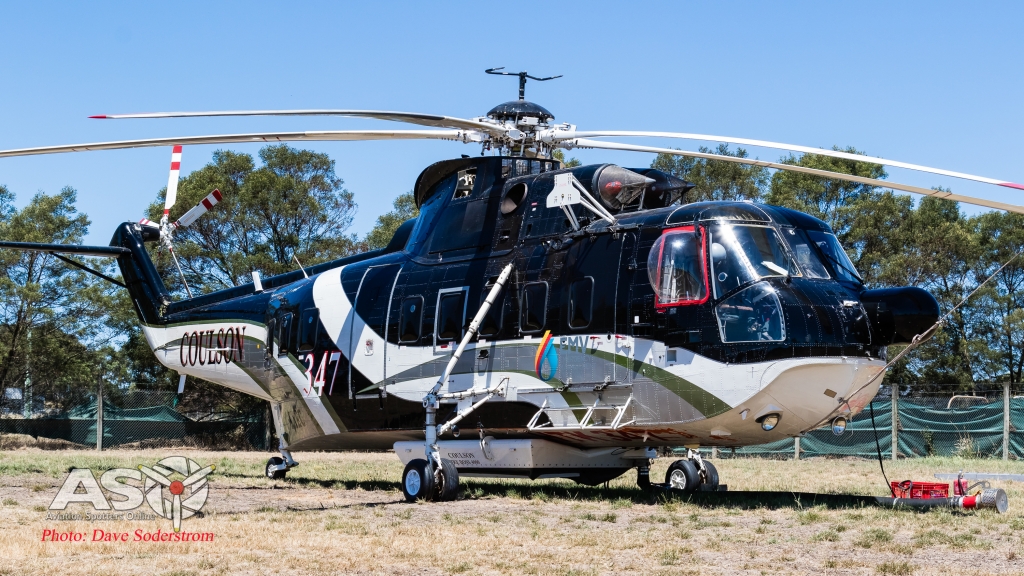
C-FXEC is seen at rest at its Colac base.

Originally built for Greenland Air as OY-HAH in 1968. The helicopter stayed in Denmark until 2000. Converted by Coulson, the this helicopter has been seen in Australia previously.

Helitak 348 with its 3000 litre Bambi bucket also has its 4000 Litre fixed tank. This allows the machine to be tailored to the fire.
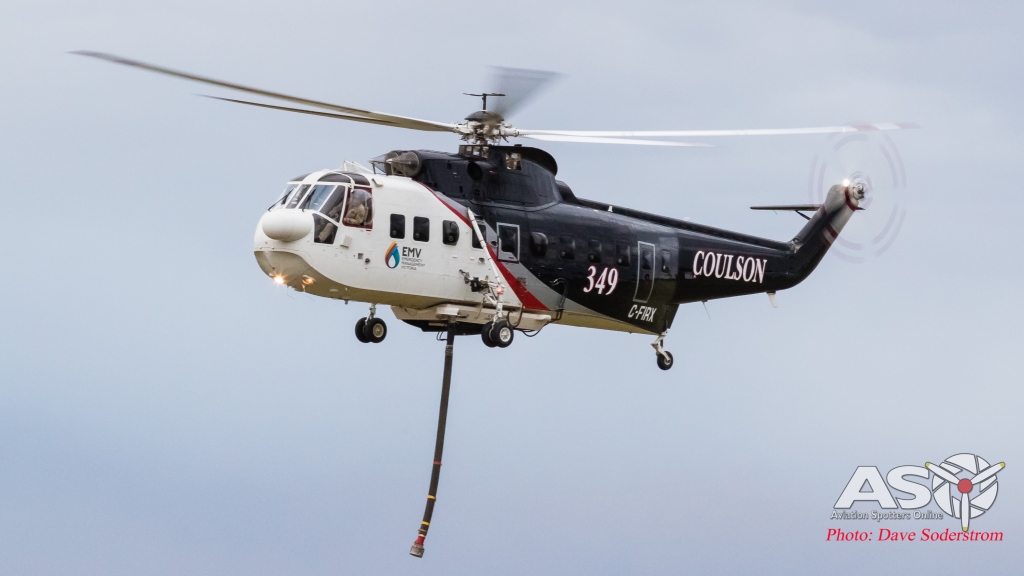
S-61 Helitak 349 C-FIRX seen during the work up phase of the Night Fire Bombing program.
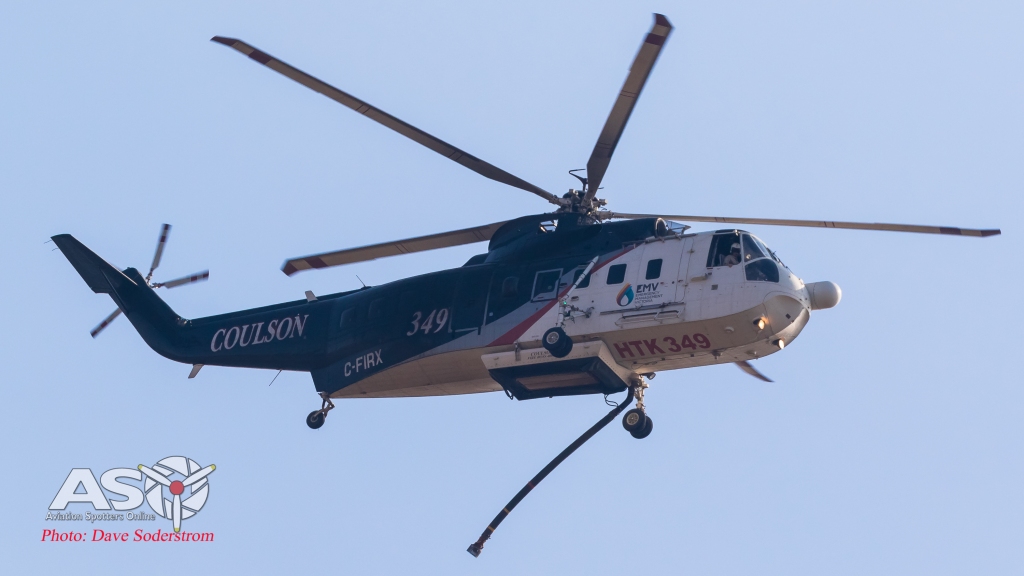
Aviation Spotters Online, wishes to thank all the pilots, crew and companies who have taken the time to work with us on this article again. It is dedicated to all the fire Fighting personal, both paid and volunteer who go above and beyond to protect Australian’s from fire. I hope this article does you proud for the vitally important work done on the fire ground.
Thanks to the ASO team in helping out with photos and also to Brenden Scott for the use of his images.
Dave

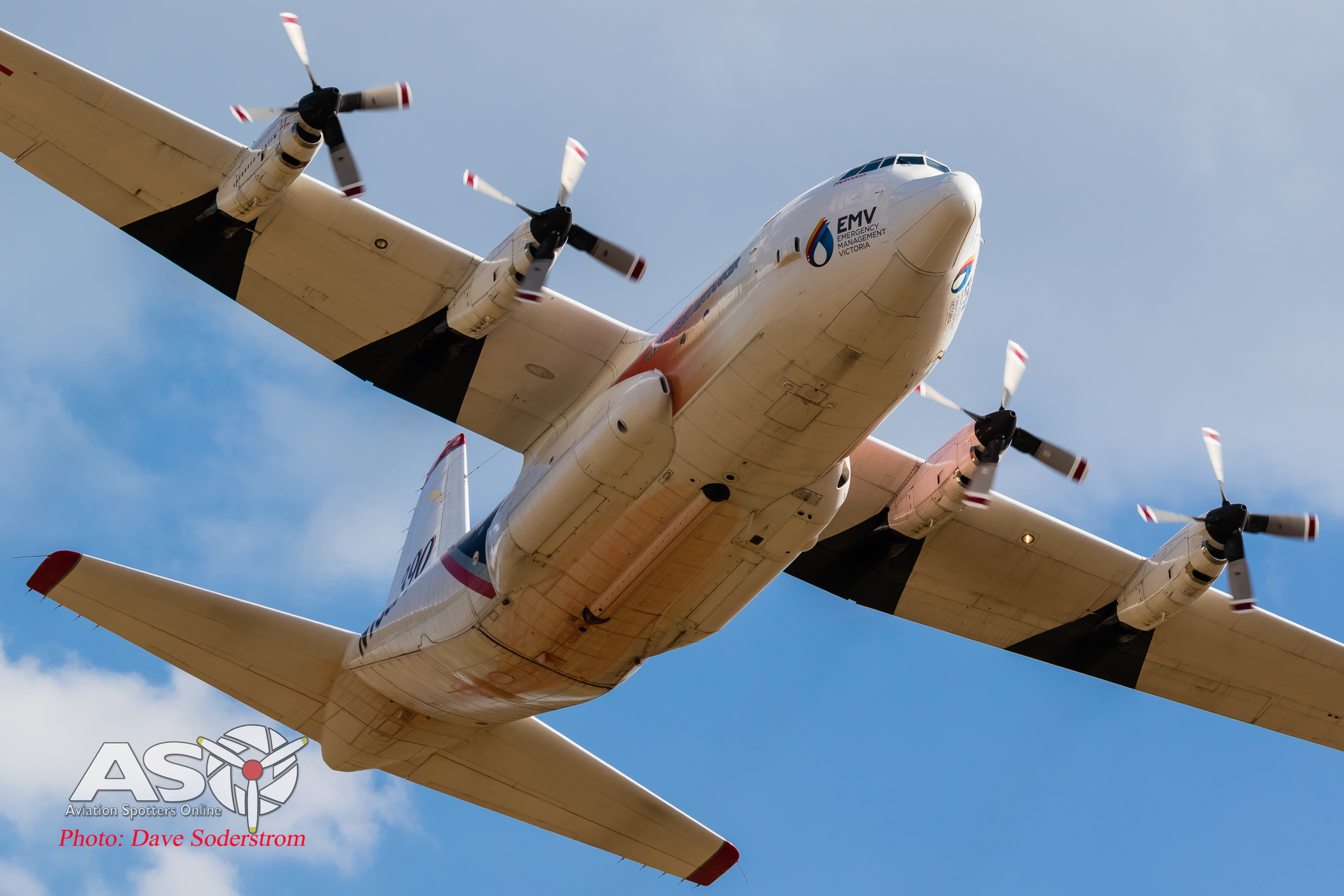



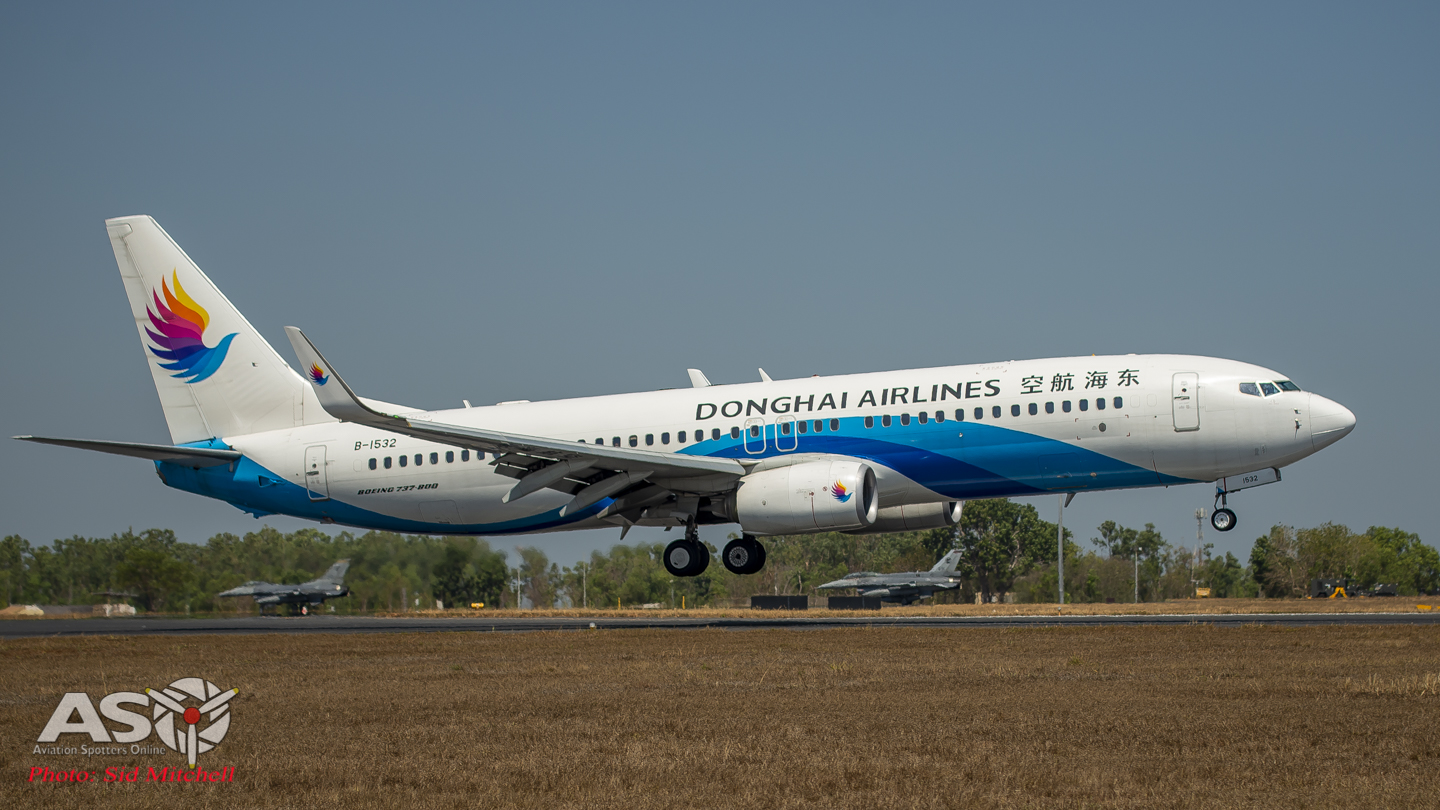
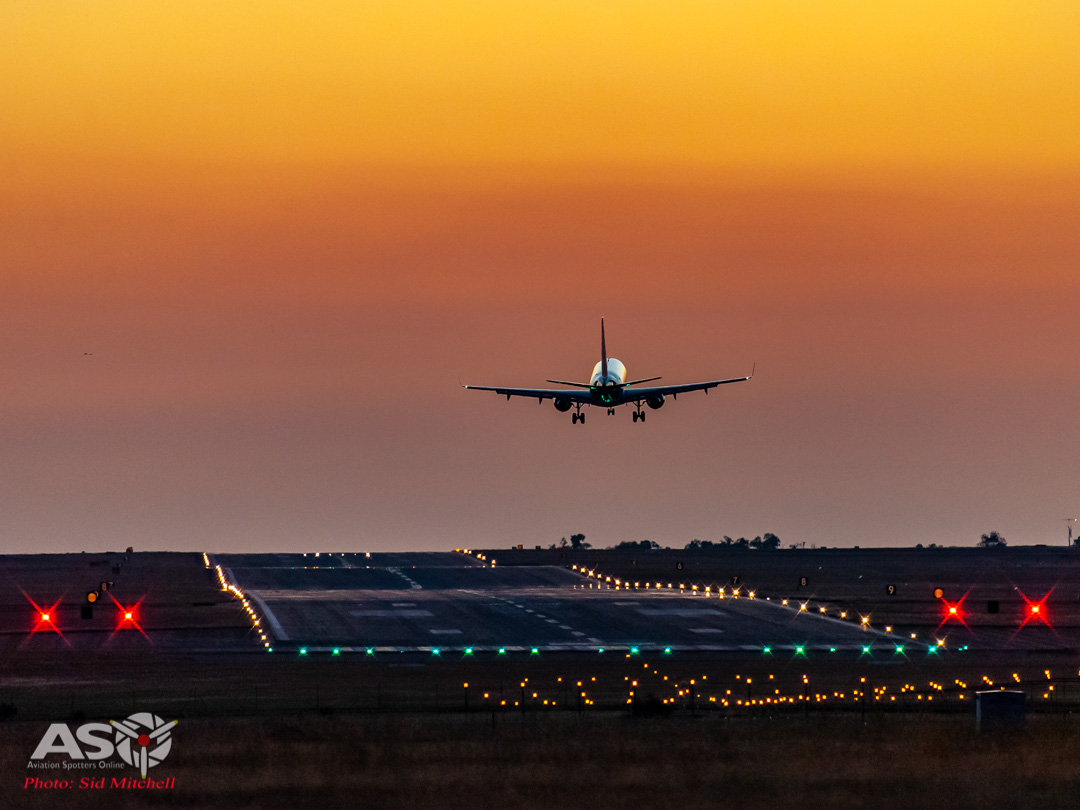





All these types and not on CL-415! How come? The year’s fire-fighting in Tasmania was a complete disaster. The big aircraft were useless and the helicopters carried piddling amounts of water.
A great deal of money is wasted on this huge variety of aircraft, seemingly to keep small operators and crop-dusting firms in business.
When will the authorities learn that the delivery rate and not the carrying capacity of the plane is important? For example, what is the turnaround time of a 737?
Until Australia buys or contracts Canadairs for at least those areas within reasonable range of water bodies – lakes, rivers or the sea – it is not taking aerial fire fighting seriously.
Hi Geoffrey,
Firstly thanks for your comments and questions. Some good points raised and I’ll try and address them as best I can for you.
The CL-415 comes up a lot and was in fact trialled in Australia many years ago. The type wasn’t as well suited to our fire fighting operations as we don’t have a lot of fresh water lakes which a suitable to water scooping operations. The aircraft require a long flight profile once loaded.
Fighting a large scale fire like in Tasmania requires a diverse range of types hence the large numbers and variety sent to operate there this season. the terrain in Tasmania lends its self to smaller helicopters and Air Tractors as they have quick turn arounds and generally are operating in an asset protection mode which means steering the fire not actually putting it out as the conditions of intensity of the fire preclude to a actually put it out.
Operations of LATS and VLATS like the 737 Fireliner are required for laying down Phos-check (retardant) to make containment lines again each fire varies with its rate of burn and topography for their use.
Australia does take its fire fighting extremely serious as look at the investment by the NSW Government in aircraft and helicopters. Currently it os one of the fastest growth areas in Australian Aviation.
I hope this clarifies a few points for you.
Dave
Good on you Geoffrey for raising this very salient point which most people don’t seem to realise… delivery rate is the key and, equally critically, the earliest in the fire’s life all the better.
In theory, if an adequate rate and total amount of water was delivered quickly enough (ideally within 20-30 mins?) to a new (small & weak) fire incident, then the fire could be suppressed or at least controlled to the point where the follow-up 1st responder ground crews could mop up any remaining hot spots. If this operational strategy could be applied to all new fire incidents, then wildfire development could be averted.
However, that being said, the repurposing of our aerial fleets, the logistics involved, and the (in)adequacy of our early stage fire detection systems, are probably the biggest current barriers to this being achievable.
F.Y.I. – some very interesting published papers by Greg Penney which provide the evidence & further justification for this:
– Fire 2019, 2(1), 3; https://doi.org/10.3390/fire2010003
– Fire Safety Journal 106, April 2019; DOI: 10.1016/j.firesaf.2019.03.012
How come you don’t have details on Helitak 327 out of Benalla??
I’m really interested in that aircraft.
Kind regards
Mattie Hooker
M: 0407 437 925 DM: 0409 187 617
Mattie’s Photography Down Under
matthew.ses.rescue@icloud.com